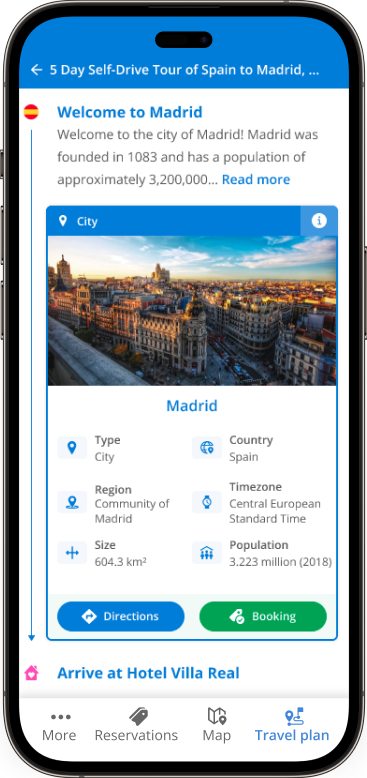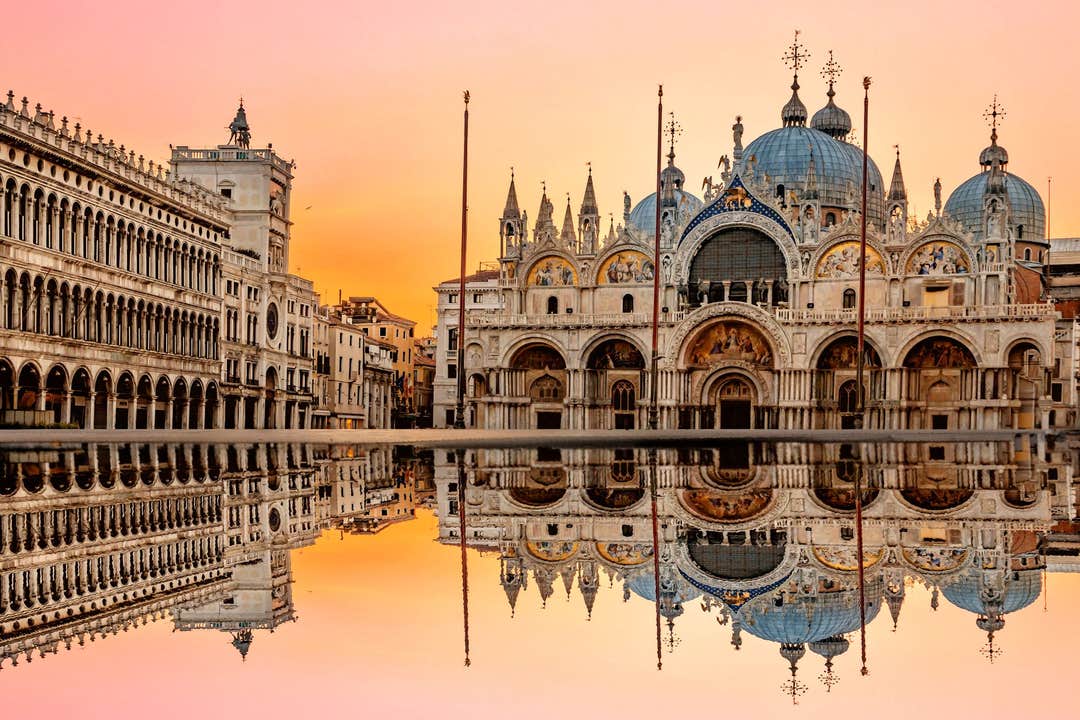
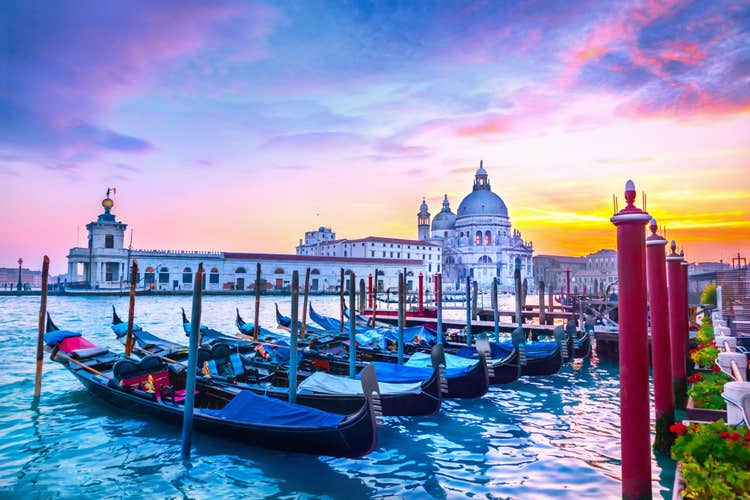
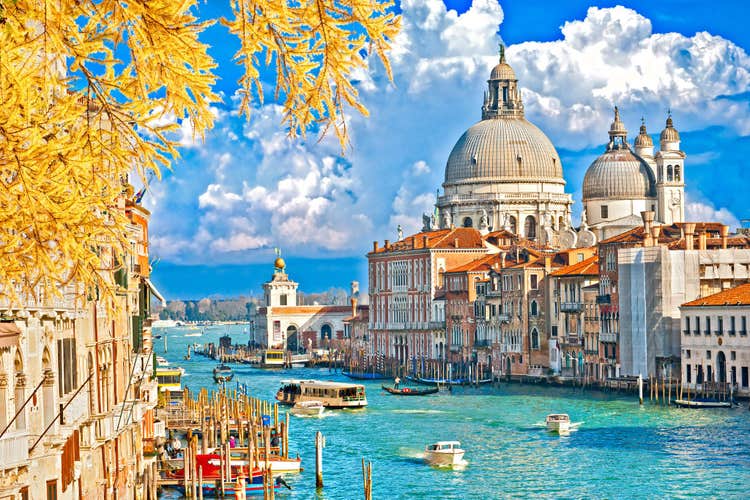
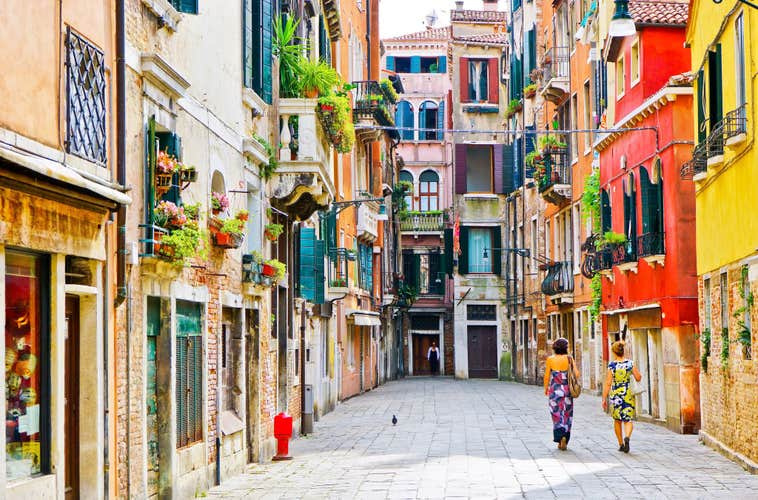

Discover the best time to visit Venice with insights into its seasonal charm, weather, and iconic events like the Carnival of Venice. This guide highlights how each season enhances the city’s beauty, helping you plan a memorable journey through its canals and historic streets.
Figuring out the best time to visit Venice isn’t just about the weather—it’s about the kind of experience you want. Some months bring serene gondola rides, while others pulse with festival energy.
Experiencing the best tours and activities in Venice is all about timing. Traveling at the right time can also mean finding better deals on direct flights to Venice. Plus, booking the top places to stay in Venice is easier when you know the ideal season.
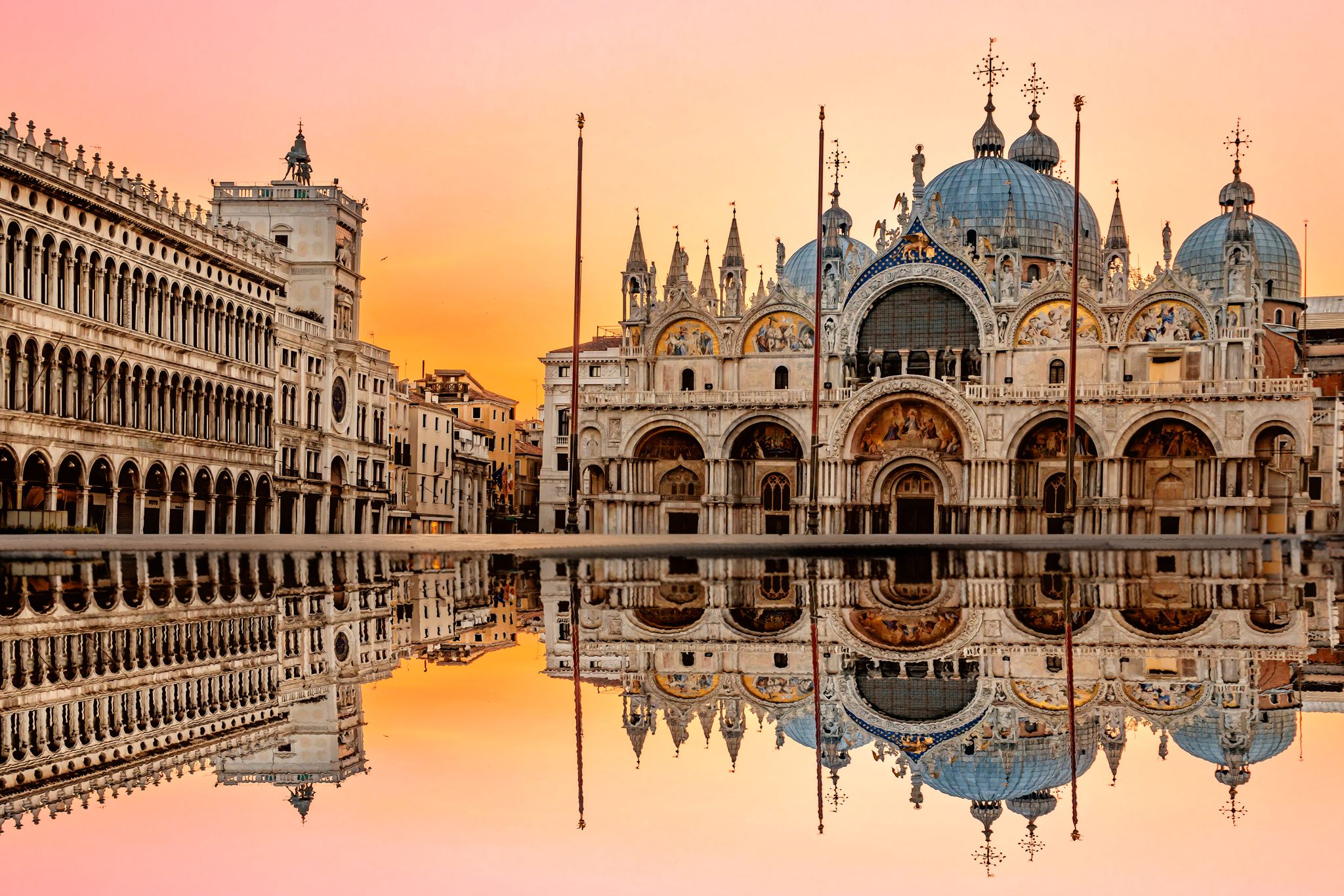
Venice, known as "La Serenissima", captivates visitors with its canals, grand palaces, and timeless beauty. The best time to visit depends on your travel style—summer’s energy or winter’s quiet.
This guide breaks it all down, from the best months for romance and local events to when to avoid flooding, so you can plan the perfect getaway with the best Venice vacation packages.
Insights Into Venice’s Weather and Seasons
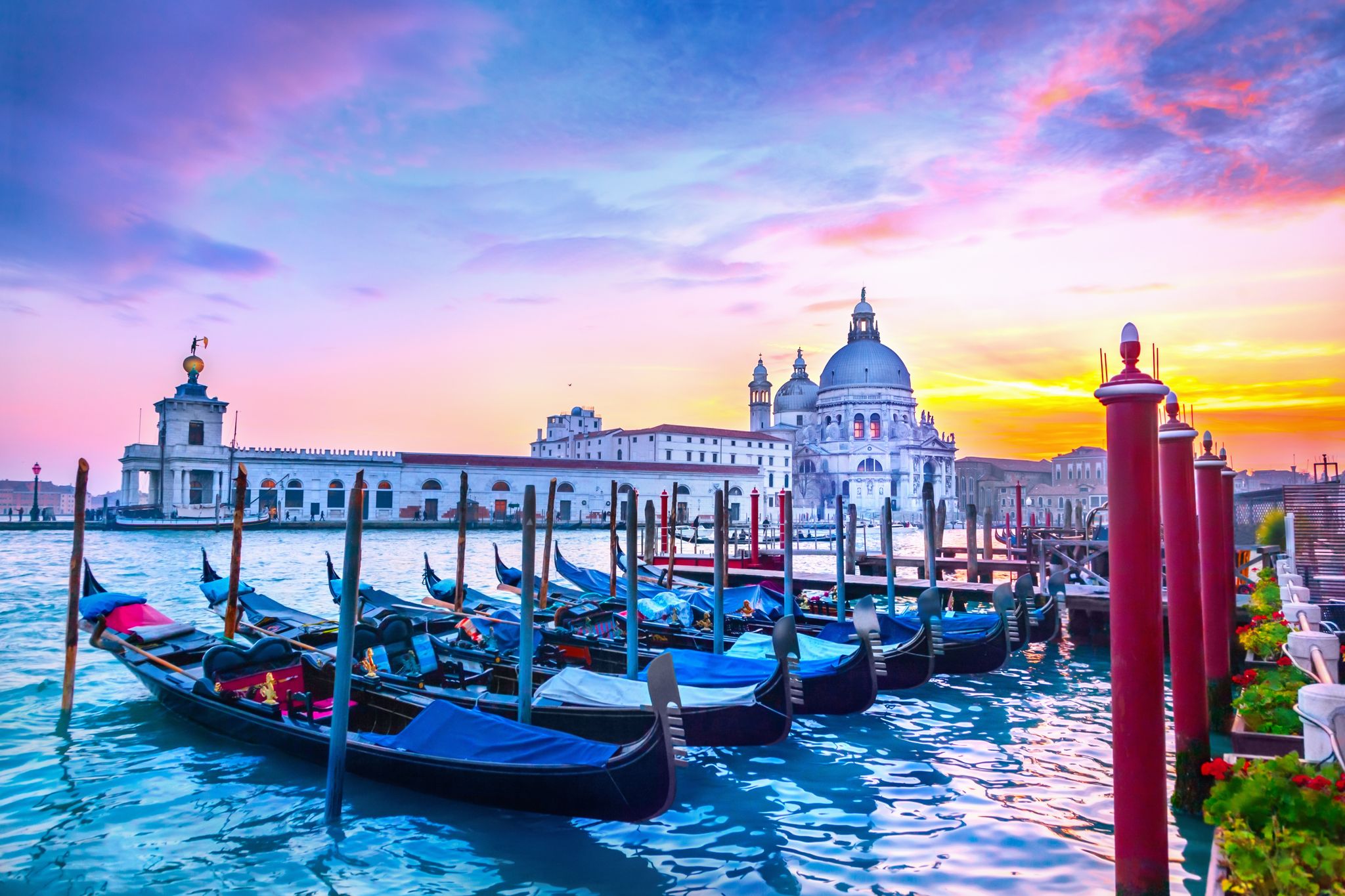
Venice’s humid subtropical climate shapes the city’s atmosphere year-round. High humidity, steady rainfall, and distinct seasons create dramatic weather shifts. The lagoon amplifies heat in summer and cold in winter, adding a unique twist to the city’s atmosphere.
Humidity is a defining feature, intensifying summer’s warmth and adding a chill to winter’s air. Rain is fairly consistent throughout the year, with autumn and early winter being the wettest periods.
Fog is common in cooler months, creating an ethereal ambiance, while occasional high tides (acqua alta) can lead to temporary flooding in low-lying areas.
Understanding these weather patterns is key to determining the best time to visit Venice. Planning with the weather in mind ensures you get the most out of your trip.
When To Visit Venice for the Best Weather
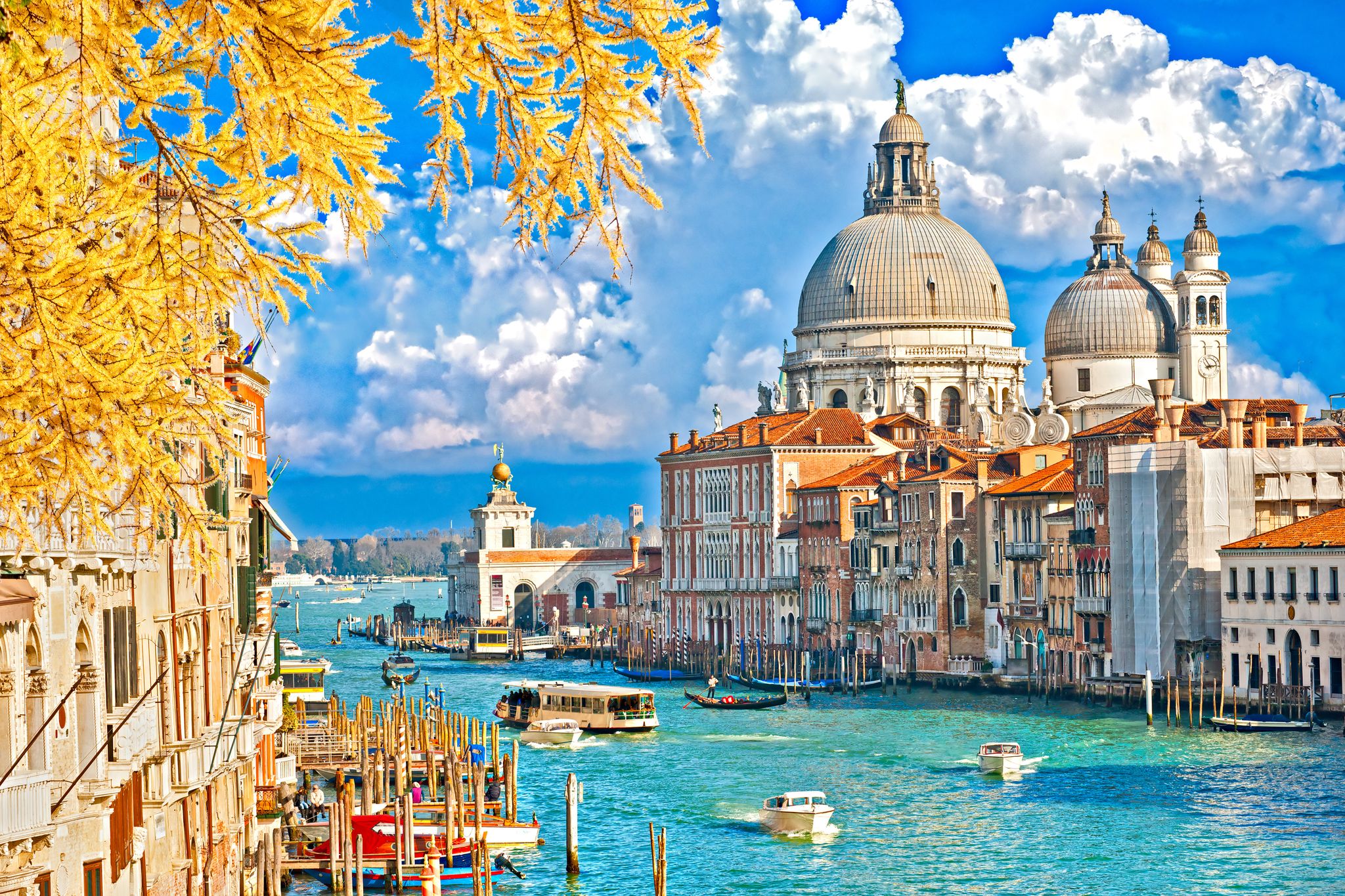
With Venice’s ever-changing climate in mind, choosing the right time to visit can make all the difference. If you want the most comfortable conditions for exploring, it’s important to plan around the city’s climate patterns.
Below, you’ll find a breakdown of what to expect each season—helping you decide the best time to visit Venice for ideal weather.
Spring in Venice: Weather Patterns and What to Expect
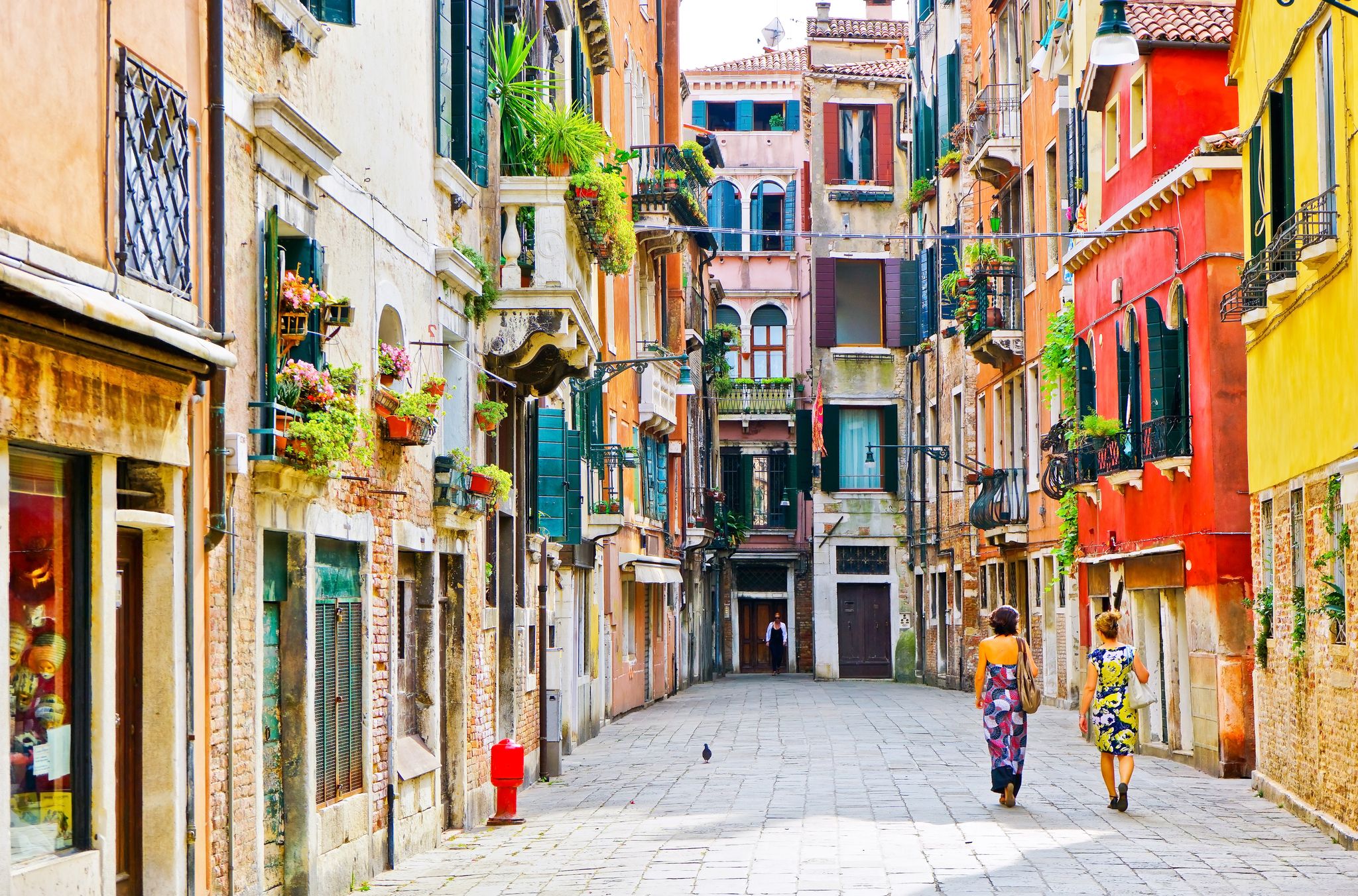
Spring adds bursts of color to Venice’s narrow alleyways, with mimosas and wisteria in full bloom. Temperatures range from 46 F to 68 F (8 C to 20 C), with light rain showers occasionally adding to the charm.
This season lets you experience the city’s beauty before the summer rush, making it ideal for a walking tour of Venice. As the season progresses, the days grow longer and warmer, creating an inviting atmosphere for outdoor exploration.
Summer in Venice: Weather Patterns and What to Expect

Summer in Venice pulses with vibrant energy, bringing bustling piazzas and packed canals. Temperatures range from 64 F to 82 F (18 C to 28 C), with high humidity and occasional thunderstorms. Despite the heat and crowds, the city’s lively atmosphere makes every moment feel celebratory.
The warm weather is ideal for an evening sail across the Venice lagoon or a gondola ride through the Venetian canals. Staying cool and hydrated is essential, especially in July and August, when the heat and humidity reach their peak.
Fall in Venice: Weather Patterns and What to Expect
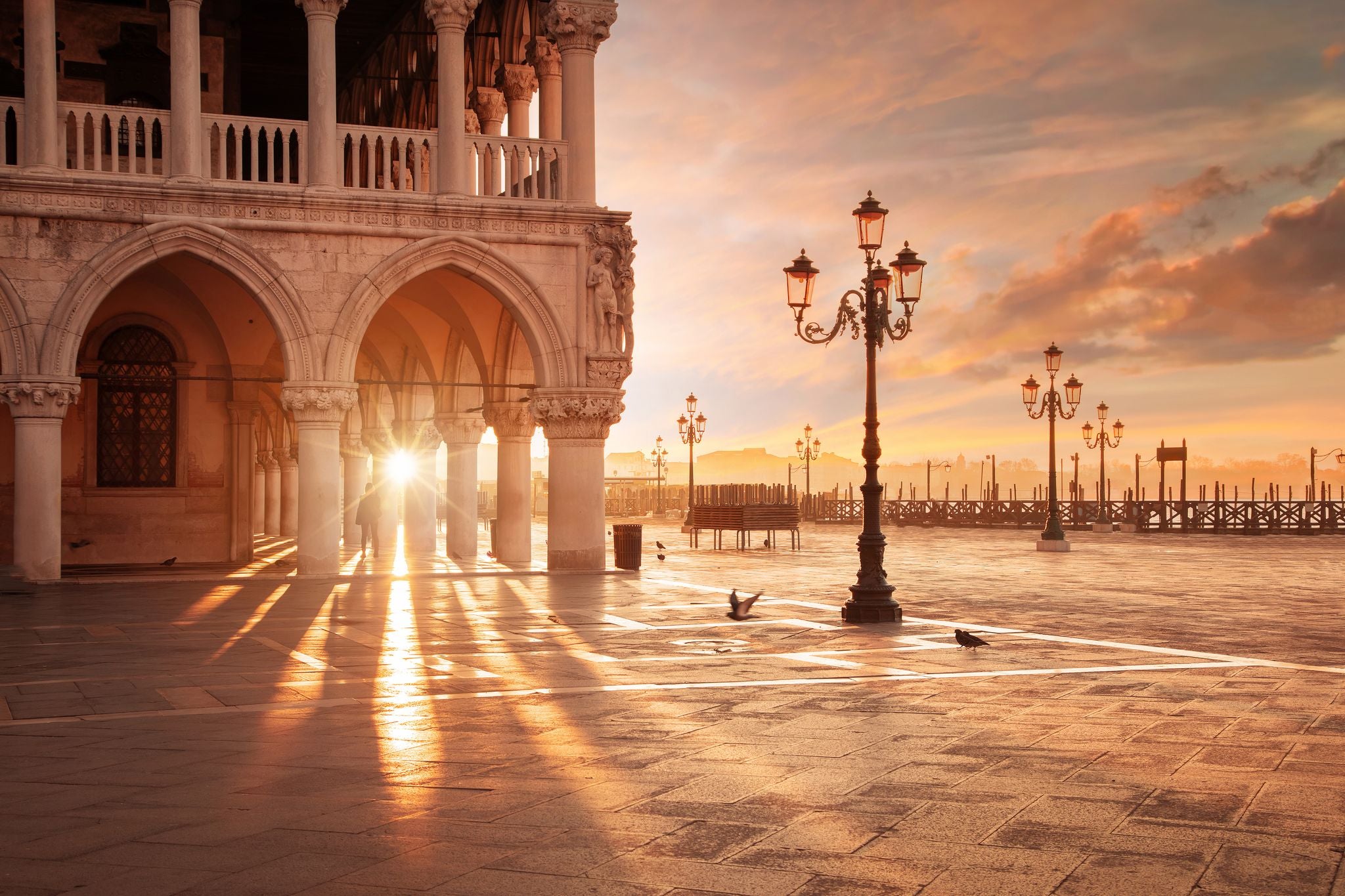
Fall reveals a quieter, more reflective Venice. September is the warmest and driest month of fall, while October and November bring cooler temperatures and stunning autumn colors.
Temperatures range from 45 F to 70 F (7 C to 21 C), with occasional rain showers and cooling breezes. The mild weather enhances the city’s charm, with golden-hued canals and tranquil streets. With fewer crowds, a photography tour of Venice and its ancient alleys feels intimate and personal.
Winter in Venice: Weather Patterns and What to Expect
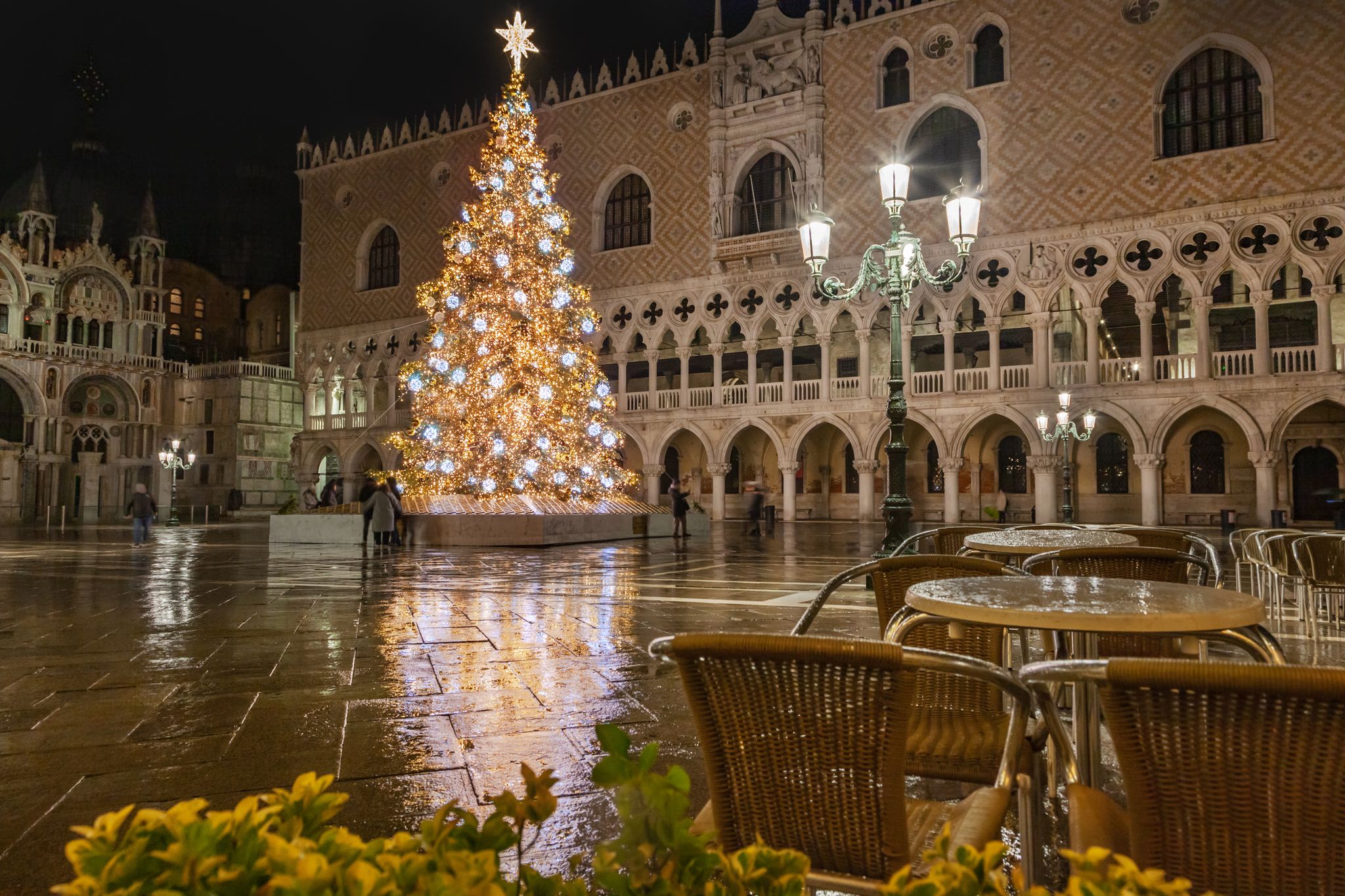
Winter wraps Venice in a mysterious, serene charm. Temperatures range from 32 F to 46 F (0 C to 8 C), with frequent fog adding to the dreamlike atmosphere.
Visitors should expect cold, damp conditions, but the mix of quiet mornings and festive evenings makes winter a special time to experience the city. Take part in a Magic Christmas tour in Venice to immerse yourself in the city’s holiday spirit.
What Is the Best Season To Visit Venice for Good Weather?
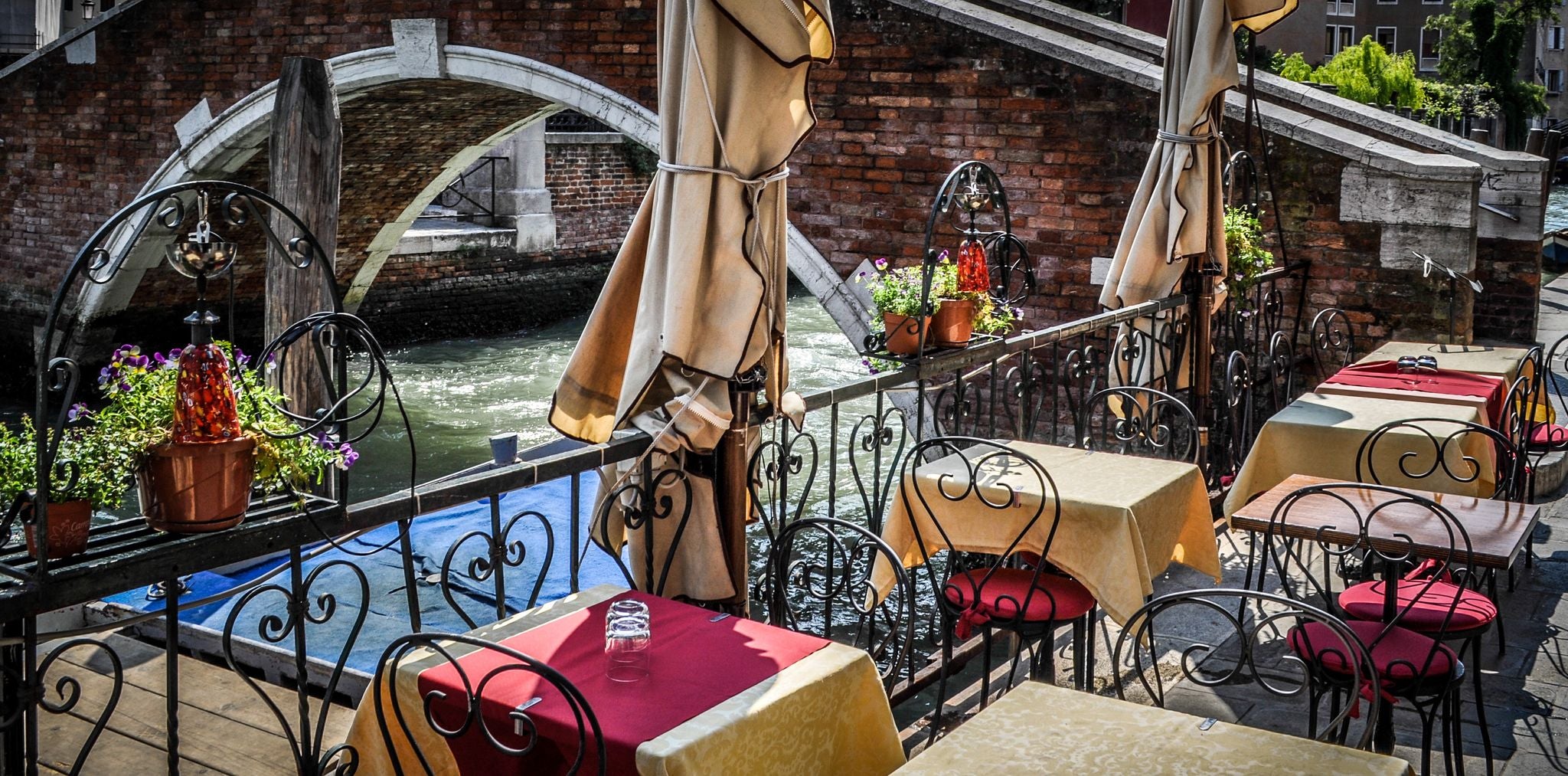
For the most comfortable weather, the best time to visit Venice is spring (April–June) or fall (September–October). These seasons bring mild temperatures, lower humidity, and ideal conditions for outdoor activities like gondola rides, walking tours, and al fresco dining along the canals. With plenty of sunshine and fewer weather extremes, exploring the city feels effortless.
Summer (July–August) offers long days and warm evenings but comes with high heat, humidity, and larger crowds, making midday sightseeing more challenging. On the other hand, winter (November–March) has cooler temperatures, occasional rain, and fog, which can create a moody, atmospheric charm but also limits outdoor exploration.
For the best mix of comfortable weather, outdoor-friendly conditions, and a relaxed atmosphere, spring and fall are the ideal seasons to visit Venice.
When To Visit Venice for the Best Festivals and Events
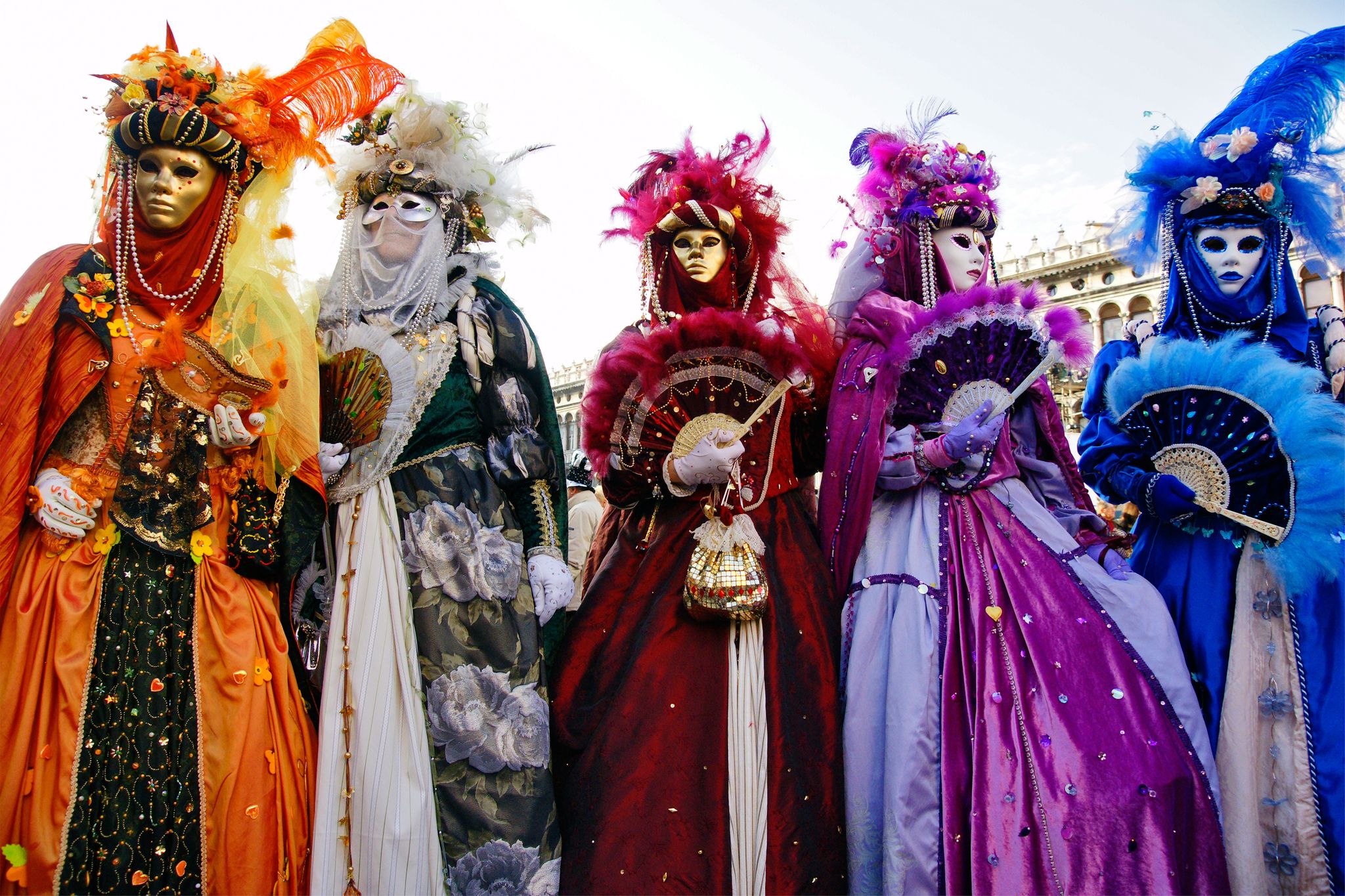
Venice hosts vibrant events and festivals year-round, each reflecting its rich history and traditions. From grand celebrations to local gatherings, they make every visit memorable. Here are some highlights to help you choose the best time to visit Venice, Italy.
Best Spring Festivals and Events in Venice
Festa di San Marco (April 25th): Celebrate Venice’s patron saint with parades, music, and traditional Venetian food.
Vogalonga (May or June): Watch a unique rowing event. It features traditional Venetian boats racing through the canals. Interested in this water activity? Join a Venetian rowing class to gain the skill firsthand.
Venice Biennale (May to November): This famous art exhibition, in late spring, draws global art lovers.
Best Summer Festivals and Events in Venice
Festa del Redentore (July): A dazzling fireworks display and waterfront festivities mark the end of a historic plague.
Venice Film Festival (Late August to Early September): The oldest film festival in the world attracts filmmakers and celebrities, making Venice a hub for cinema fans. To set a more mysterious mood, follow in the footsteps of Commissario Brunetti and see Venice through Donna Leon’s eyes.
Best Fall Festivals and Events in Venice
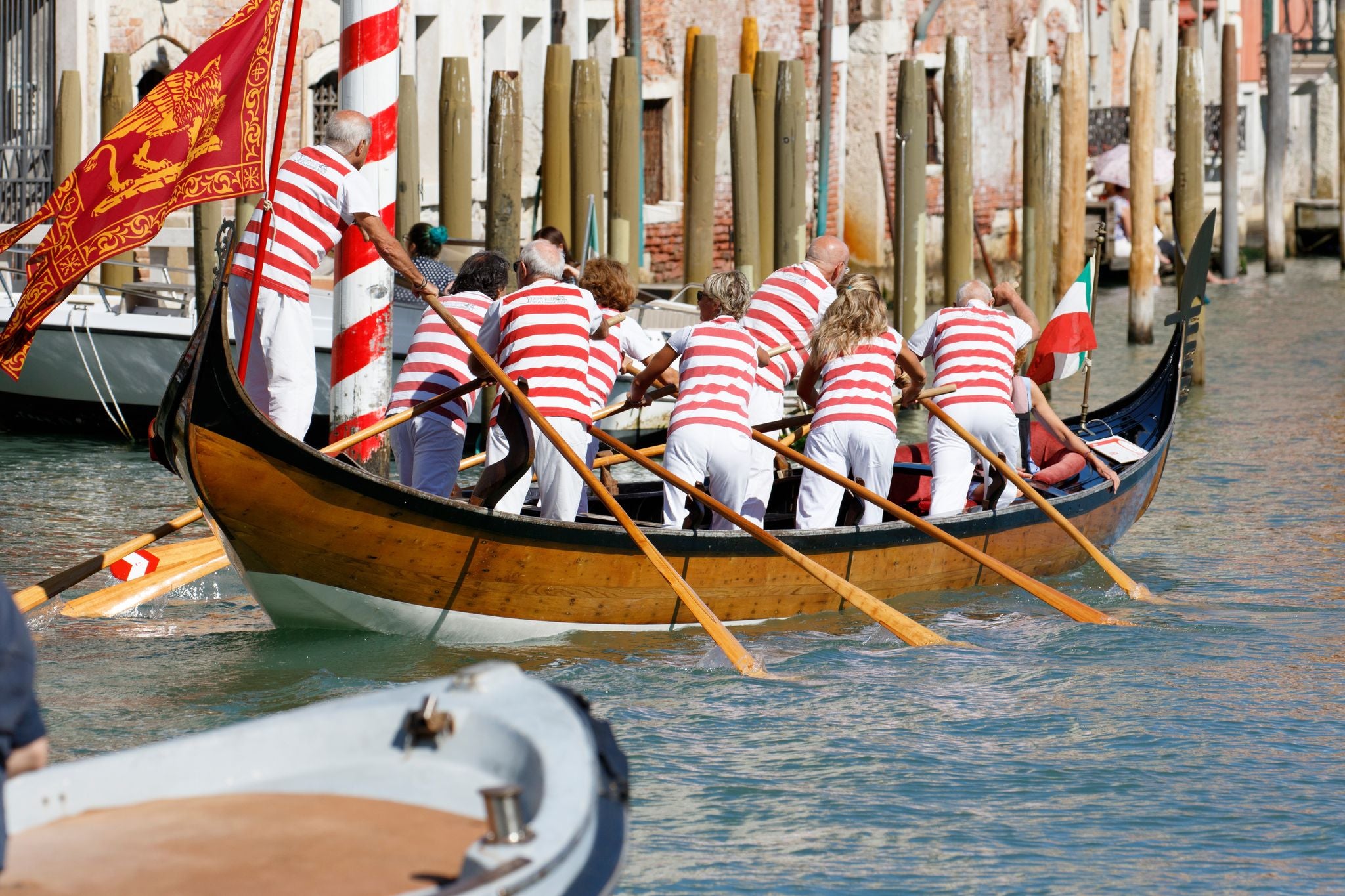
Regata Storica (September): Enjoy a colorful procession and historic boat race on the Grand Canal. For a different perspective, unwind with a private evening boat tour of Venice's Grand Canal and take in its beauty under the night lights.
Venice Biennale: The art exhibition continues into fall, offering a quieter time to explore its innovative displays.
Venice Marathon (October): See runners navigate Venice’s streets and bridges on a breathtaking route that ends in the historic city center.
Best Winter Festival and Events in Venice
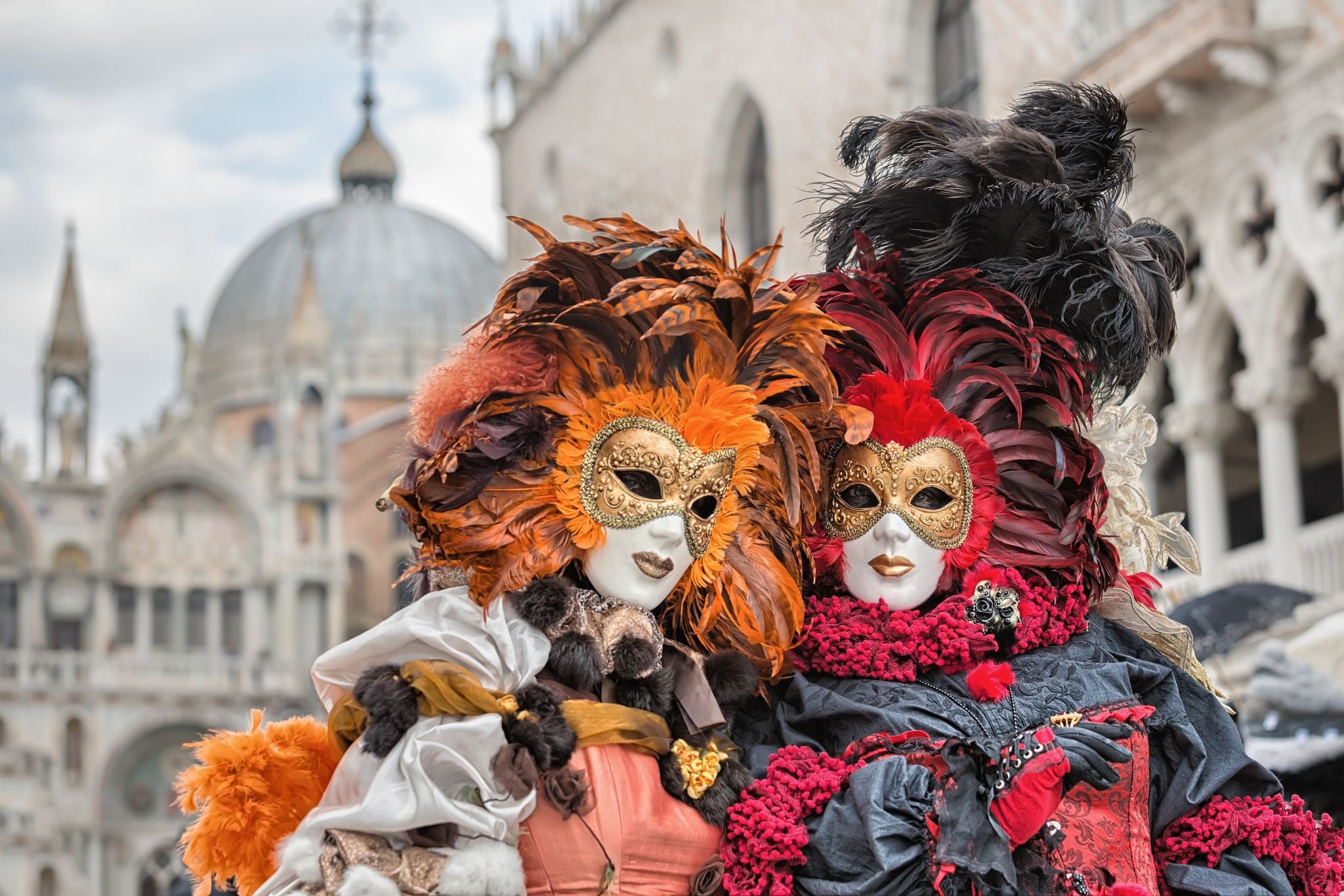
Regata delle Befane (January 6th): Celebrate Epiphany with a playful rowing race featuring participants dressed as “Befane.”
Christmas Markets (December): Soak in the holiday spirit at Campo Santo Stefano’s market, offering handmade crafts and seasonal treats.
Carnival of Venice (February): Experience elaborate masks, costumes, and lively celebrations that bring Venetian traditions to life. Enhance your visit by joining a Venice Carnival mask-making class to create your own unique masterpiece.
Visiting during these events and festivals offers a unique way to experience Venice’s lively traditions. Enhance your trip with a 6-day city break in Venice to fully enjoy the city's cultural scene and historic charm.
What Is The Best Time to Visit Venice for Events and Festivals?
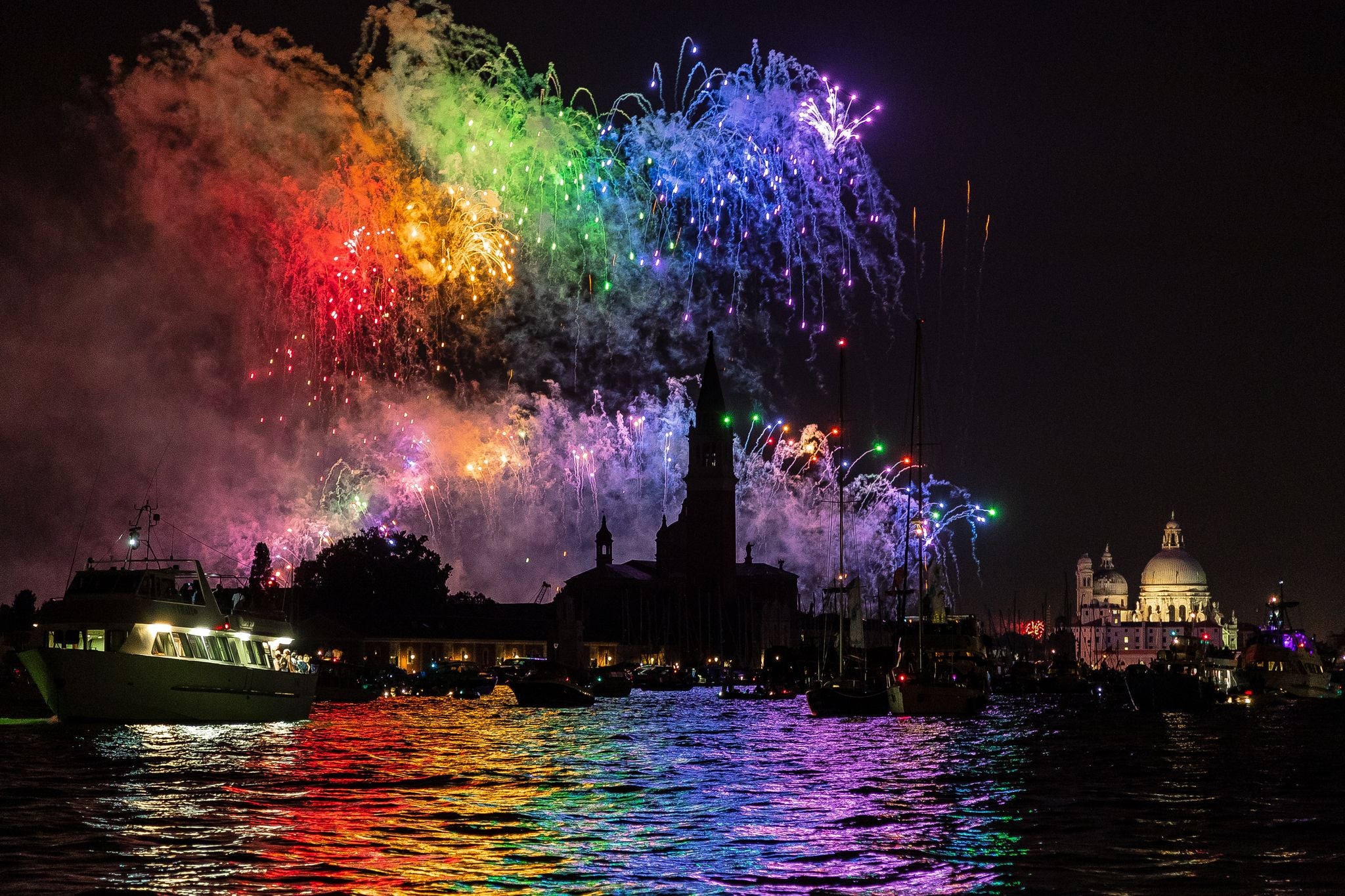
For the most iconic and high-energy festivals, summer and winter are the best times to visit Venice. Summer brings Festa del Redentore, filling the lagoon with fireworks and waterfront celebrations, while winter transforms the city with the Venice Carnival, featuring elaborate masks and festive parades.
If you prefer a quieter atmosphere with cultural events, spring and fall offer a more balanced experience. Spring marks the start of the Venice Biennale, a world-renowned art and architecture exhibition, while fall hosts the Regata Storica, a historic boat race along the Grand Canal.
Summer and winter are ideal for travelers who want to experience Venice at its most festive, though they also bring larger crowds and more extreme weather conditions. If you’d rather enjoy cultural events with a more relaxed feel, spring and fall provide a great alternative with milder temperatures and fewer tourists.
When to Visit Venice for a Romantic Getaway
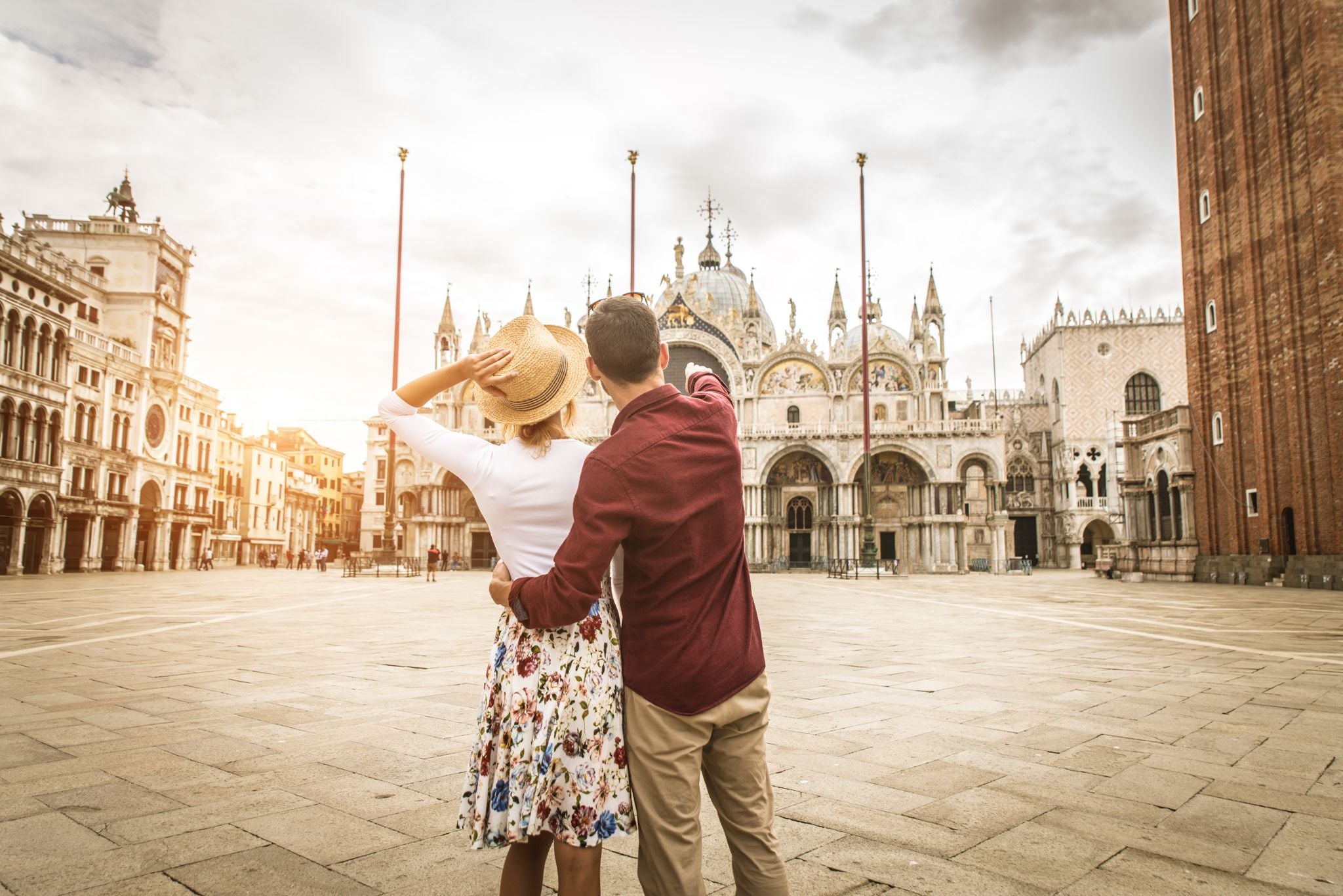
Festivals showcase Venice’s vibrant energy, but the city also sets the stage for unforgettable romantic moments. As one of Italy’s most romantic destinations, there's no shortage of romantic experiences in Venice no matter the season.
Some seasons bring a lively atmosphere, while others offer a peaceful escape. Here’s what each time of year has in store for a romantic getaway in Venice.
Spring Romance in Venice: Blossoms and Golden Sunsets
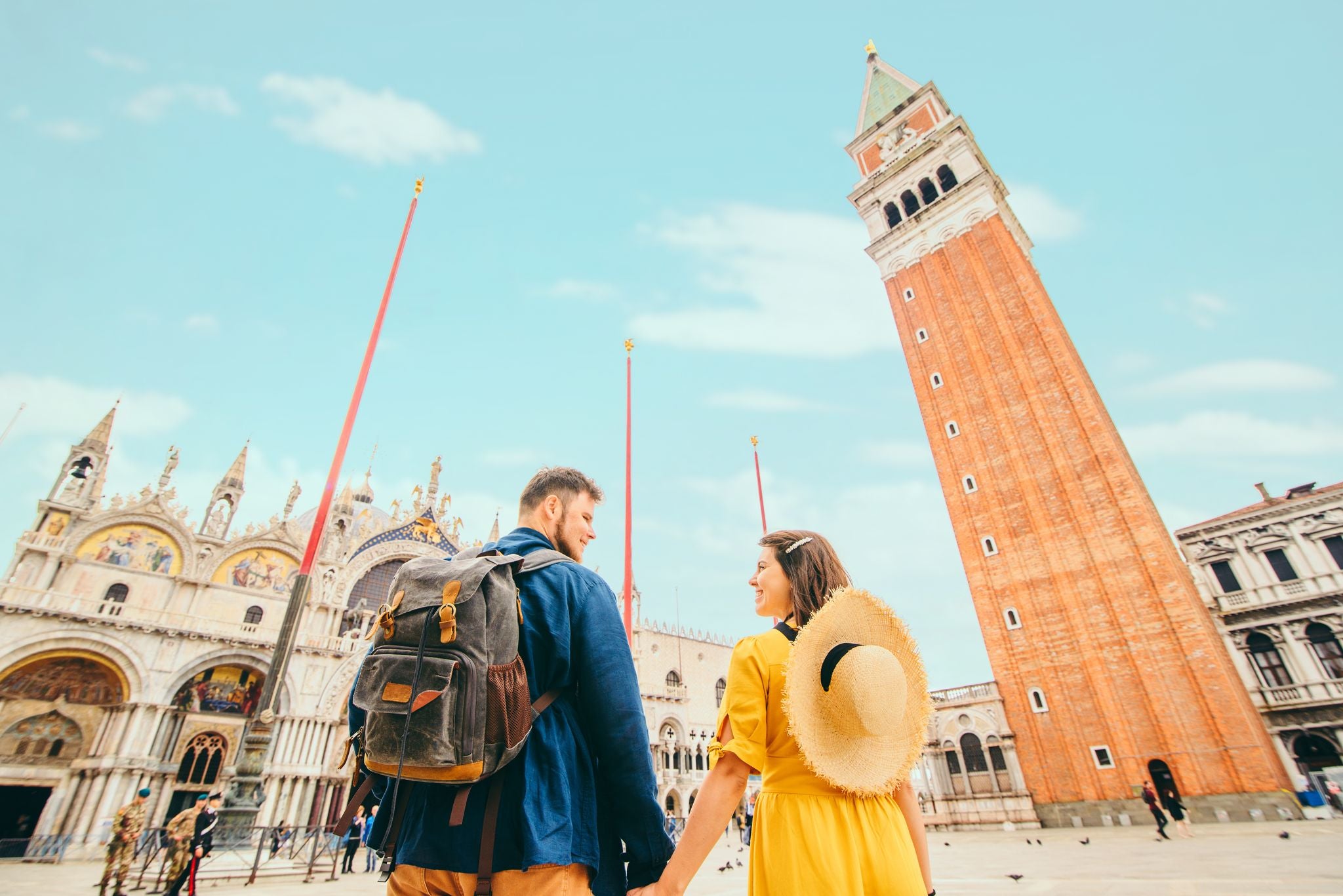
Spring transforms Venice with blooming flowers, mild weather, and golden sunsets that cast a warm glow over the lagoon. Longer daylight hours make it an ideal time for couples to explore the city’s charming streets and scenic canals.
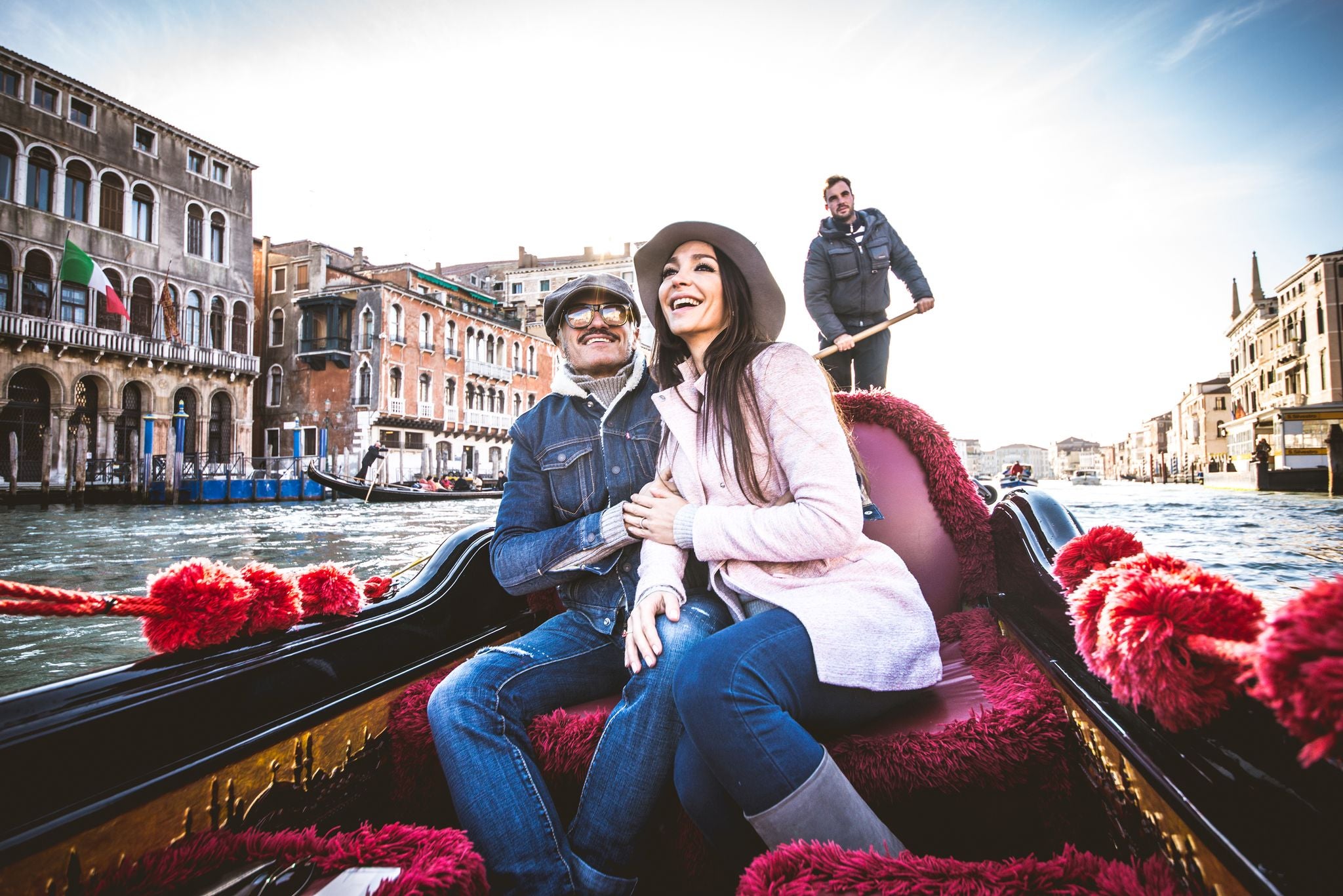
For an extra touch of romance, take a private gondola ride on the Grand Canal, a timeless experience that feels even more special in the gentle warmth of spring.
Summer Romance in Venice: Lively Nights and Passionate Moments
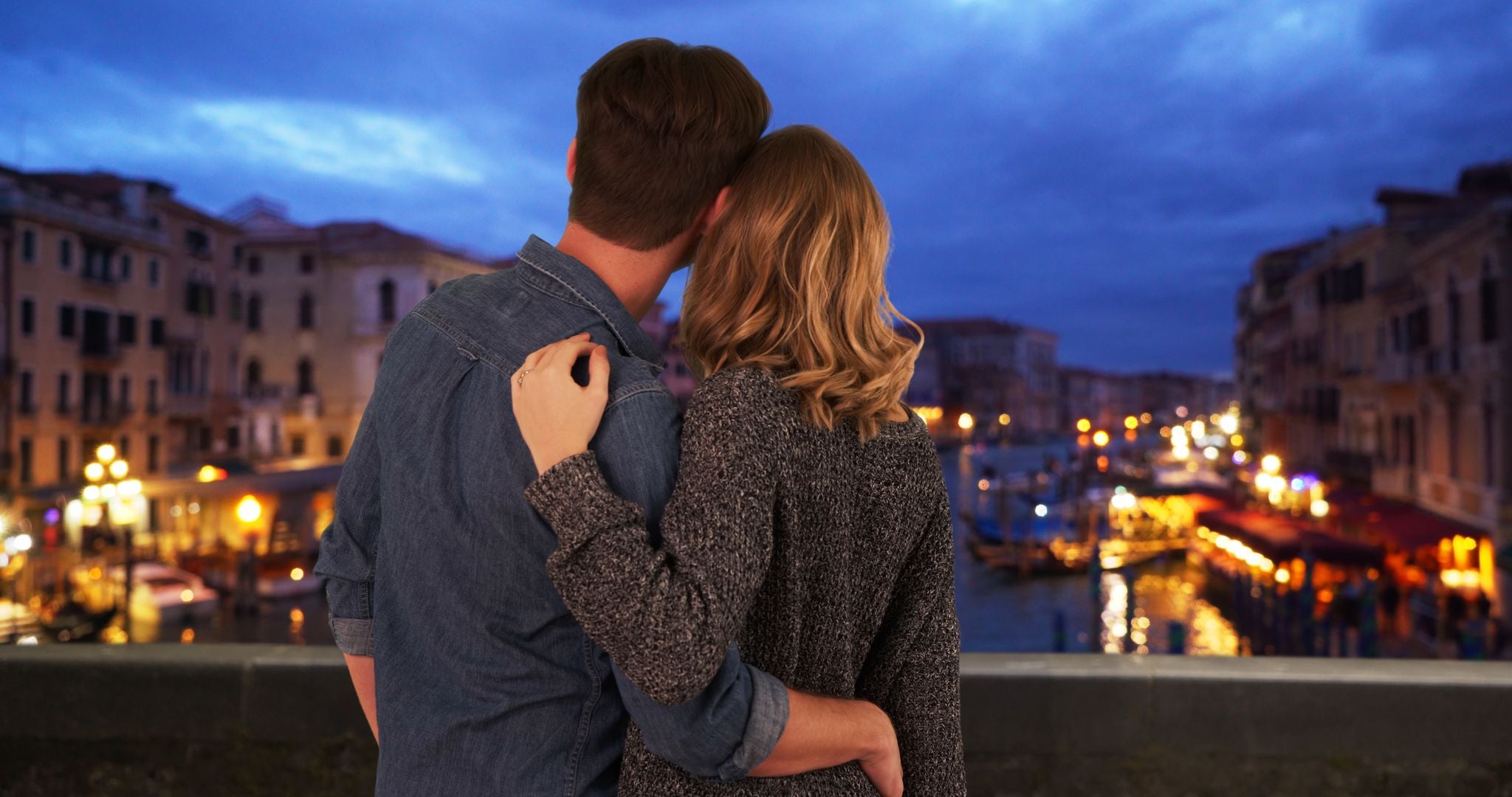
Summer brings vibrant energy to Venice, making it perfect for couples who love lively surroundings. Dine alfresco in bustling piazzas, soaking in the warm evenings and animated atmosphere.
As the sun sets, Venice’s streets glow with soft lights, creating tranquil moments by the canals. Enjoy a private evening stroll with VIP entry to Saint Mark's after hours, exploring the city’s landmarks in a serene, exclusive setting.
For a truly special experience, attend events like the Festa del Redentore. Witness fireworks over the lagoon, creating a magical backdrop for a romantic evening.
Autumn Romance in Venice: Golden Light and Tranquil Canals
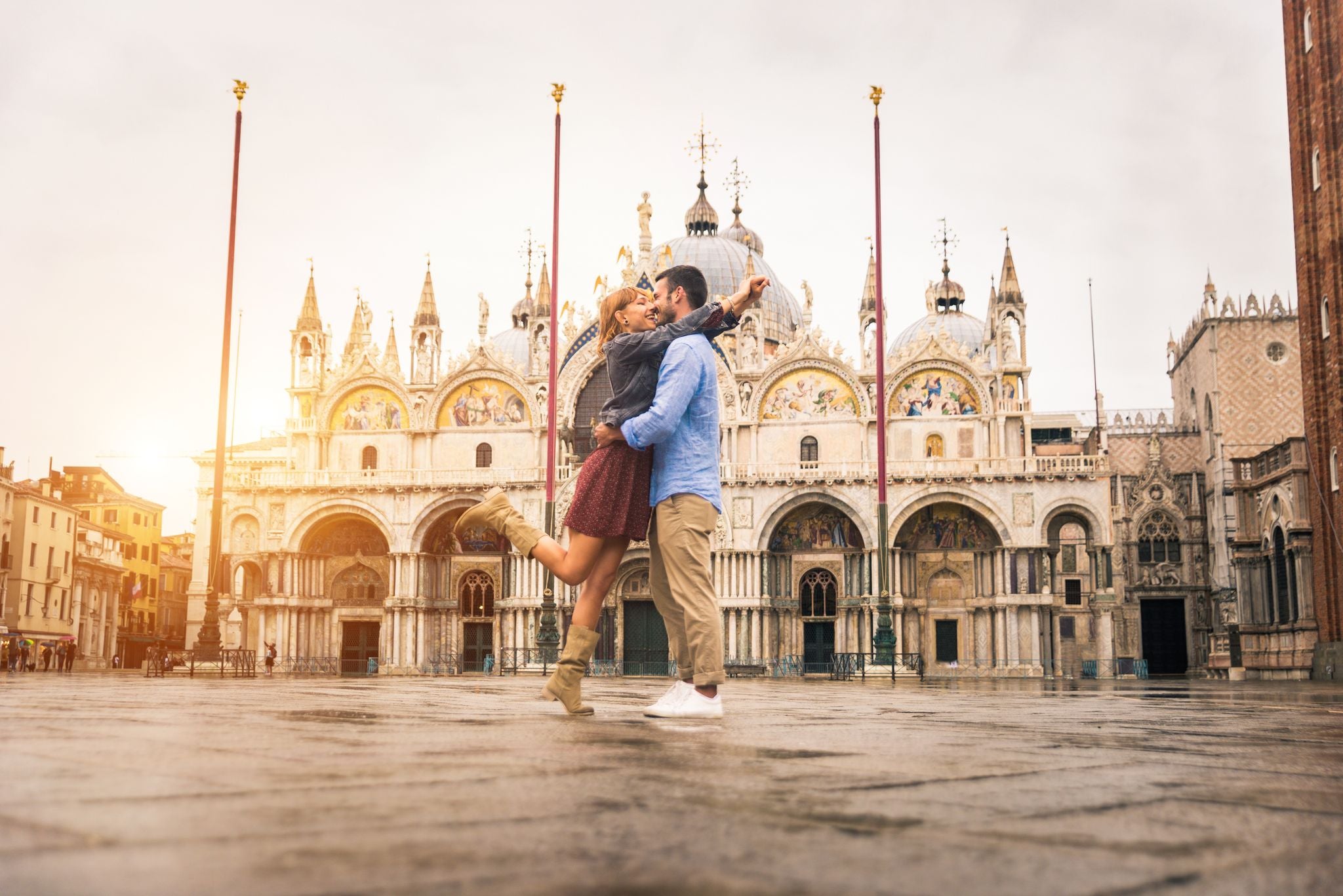
Autumn in Venice offers a tranquil, intimate atmosphere with soft golden light and fewer crowds. The canals reflect the warm hues of fall, making the city even more picturesque.
With thinner crowds, landmarks like St. Mark’s Basilica and quieter neighborhoods provide a more personal experience. Make the most of your visit with a skip-the-line guided tour of Doge's Palace and St. Mark's Basilica to explore these iconic sites without the wait.
Keep in mind, though, that autumn also brings more acqua alta (seasonal flooding). This can be both a challenge and a unique spectacle, adding an element of adventure to your romantic escape.
Winter Romance in Venice: Cozy Retreats and Festive Magic
Winter in Venice is peaceful and intimate, ideal for couples seeking privacy. The city lights up with festive magic, as Christmas markets, Venice Carnival, and sparkling decorations transform its historic streets.
Escape the winter chill at cozy trattorias serving hearty Venetian dishes like fegato alla Veneziana. For an unforgettable evening, enjoy a romantic dinner on a luxury private boat through the Venetian Lagoon, taking in the city’s beauty from the water.
What Is the Most Romantic Season To Visit Venice?
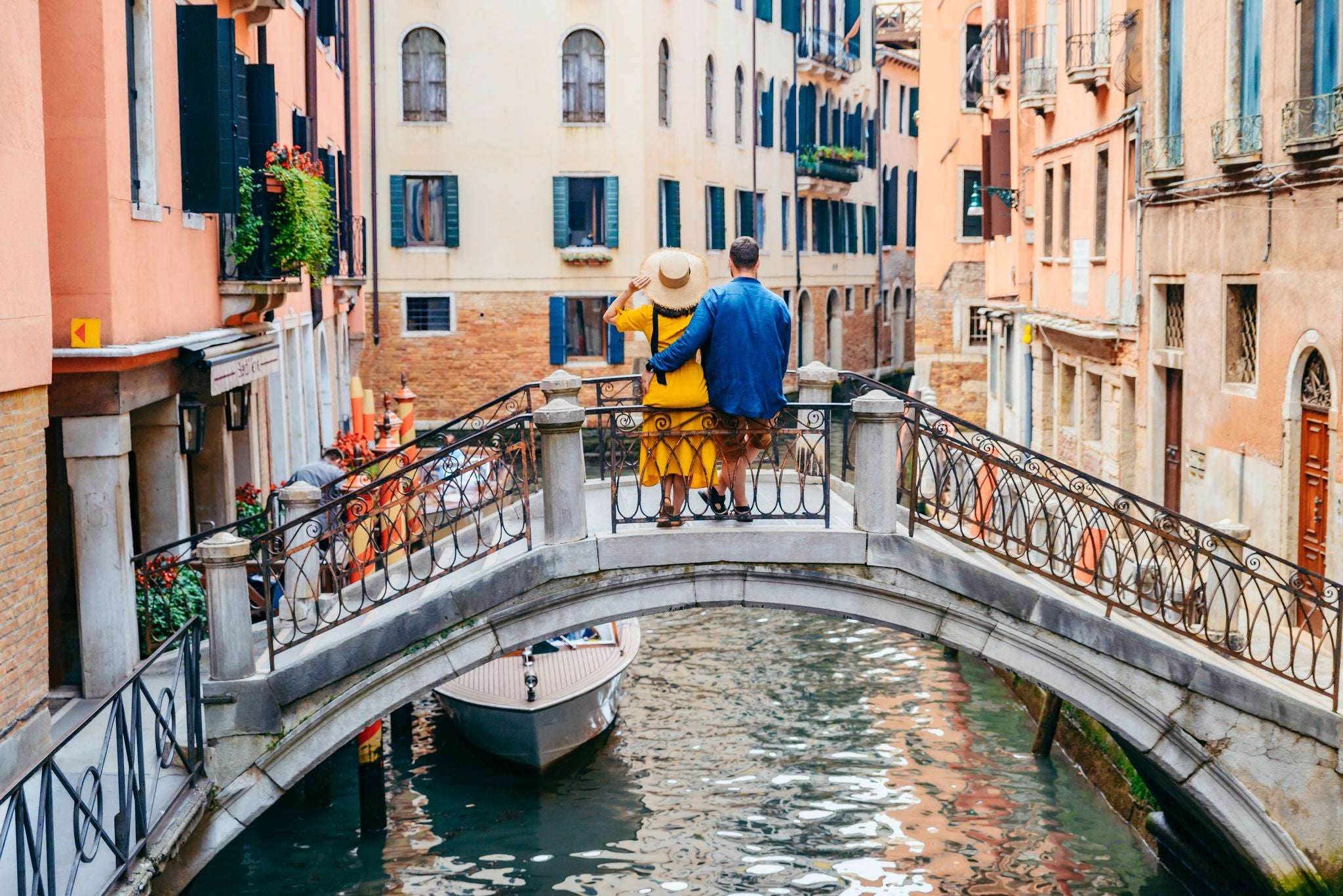
Spring is the best time to visit Venice for a romantic getaway, when the city feels alive but not overwhelming. It’s the perfect season for gondola rides, quiet walks through historic piazzas, and candlelit dinners along the Grand Canal—all without the peak-season crowds.
For couples looking for a cozy, intimate escape, winter has its own appeal. The misty canals, festive lights, and Carnival of Venice create a magical setting, especially around Valentine’s Day. However, chilly temperatures, shorter days, and occasional acqua alta can limit outdoor exploration.
Autumn is another great option for romance, offering fewer crowds, golden-hued canals, and a relaxed atmosphere. It’s ideal for wine tastings, long boat rides, and scenic views, though seasonal flooding is more common during this time.
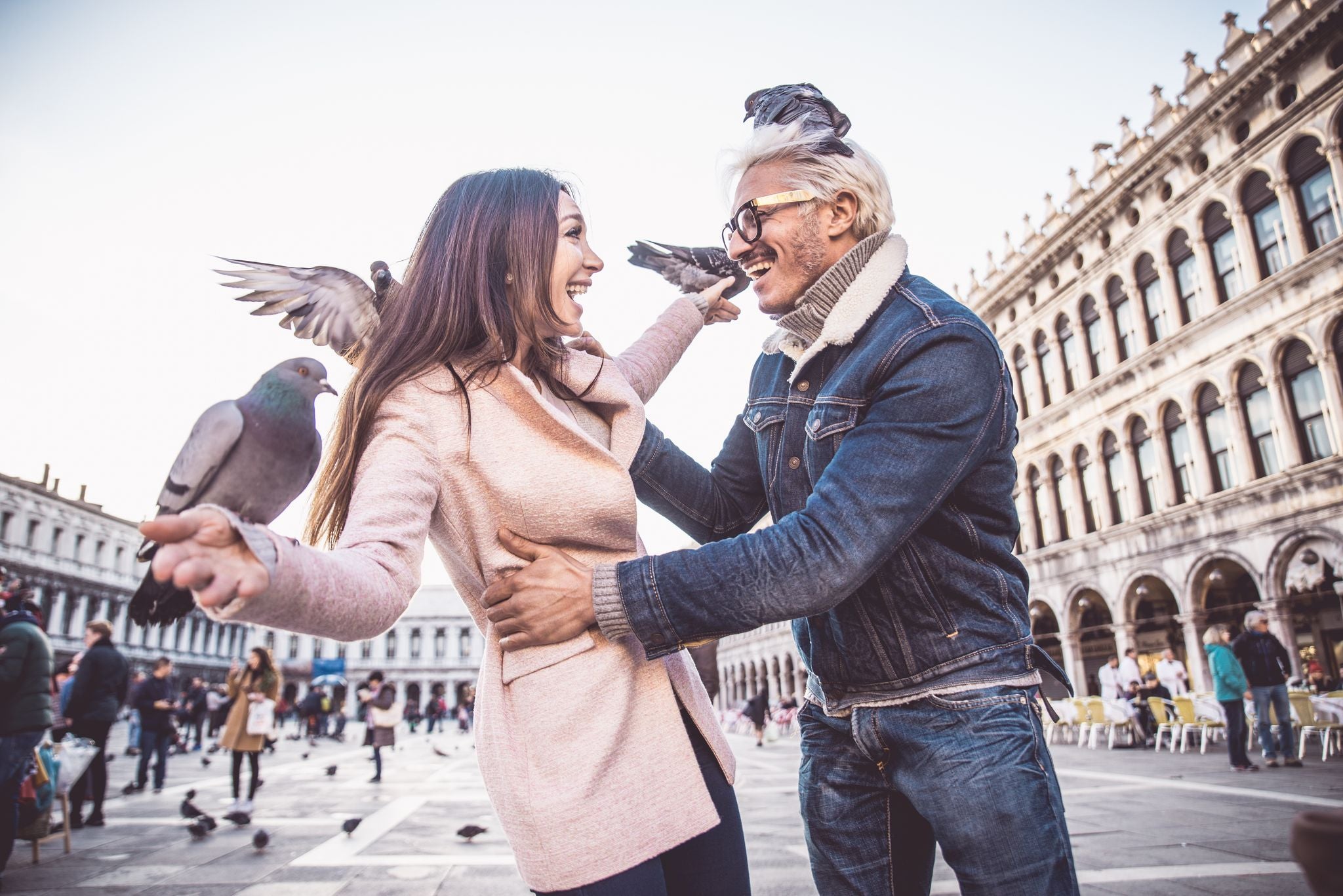
Summer is best for couples who enjoy a lively, high-energy atmosphere, with late sunsets, rooftop aperitivos, and grand festivals. While the city is at its most vibrant, high humidity and large crowds make it less ideal for those looking for a peaceful escape.
For the perfect mix of romance, relaxation, and unforgettable experiences, spring is the best season to visit Venice as a couple. No matter when you go, a 5-day Italy weekend getaway in Venice ensures you have plenty of time to soak in the city’s charm, from its quiet canals to its iconic landmarks.
When To Visit Venice for a Culinary Journey
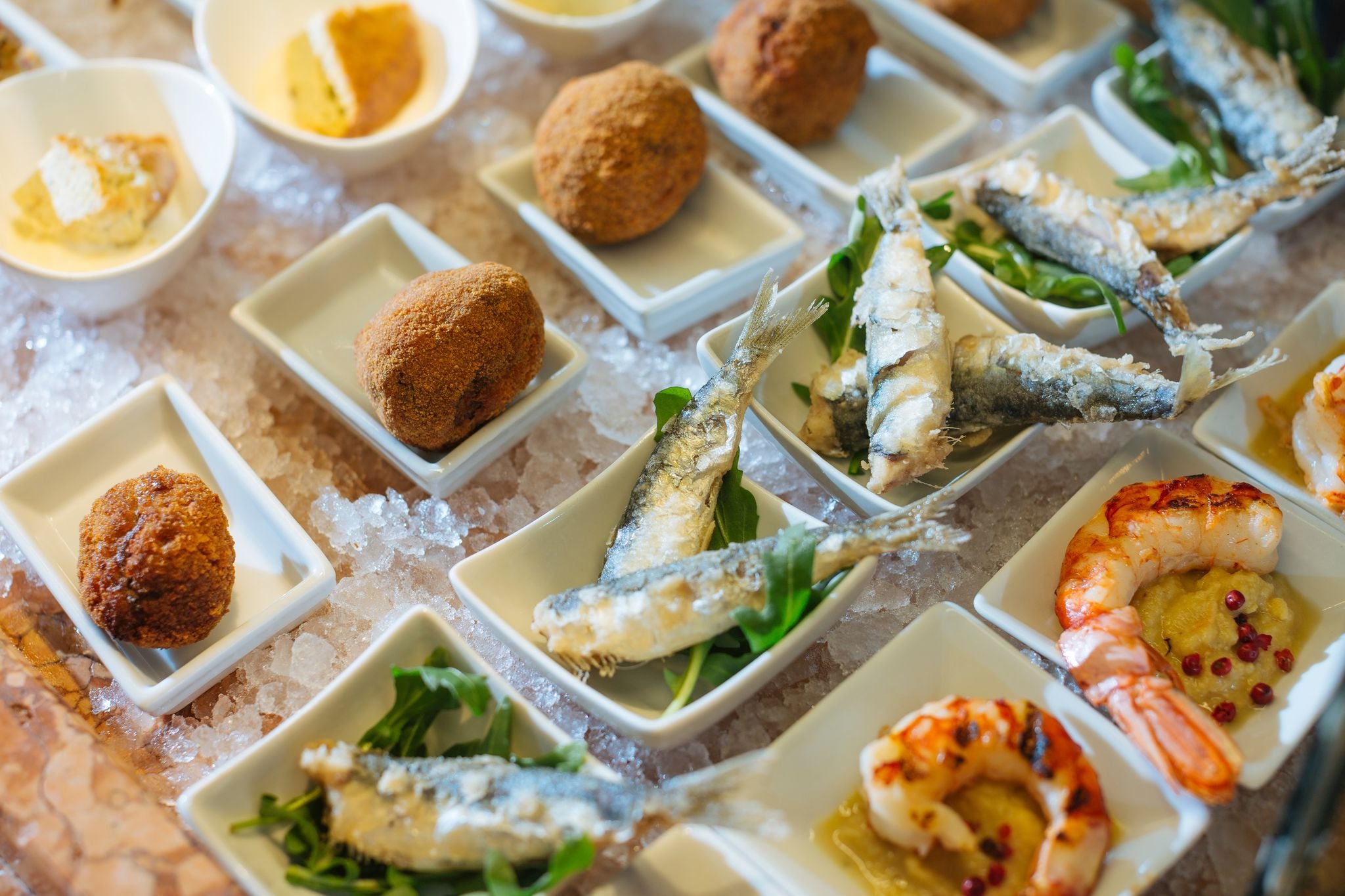
No matter when you visit, you’ll find signature dishes that showcase Venice’s culinary traditions. Explore the city's seasonal flavors through food and drink experiences in Venice tailored to your tastes and interests.
What To Eat and Drink in Venice in Spring and Early Summer
As Venice blooms in spring, so does its culinary scene. The Rialto Market comes alive with seasonal produce, including artichokes from Sant’Erasmo Island and delicate white asparagus.
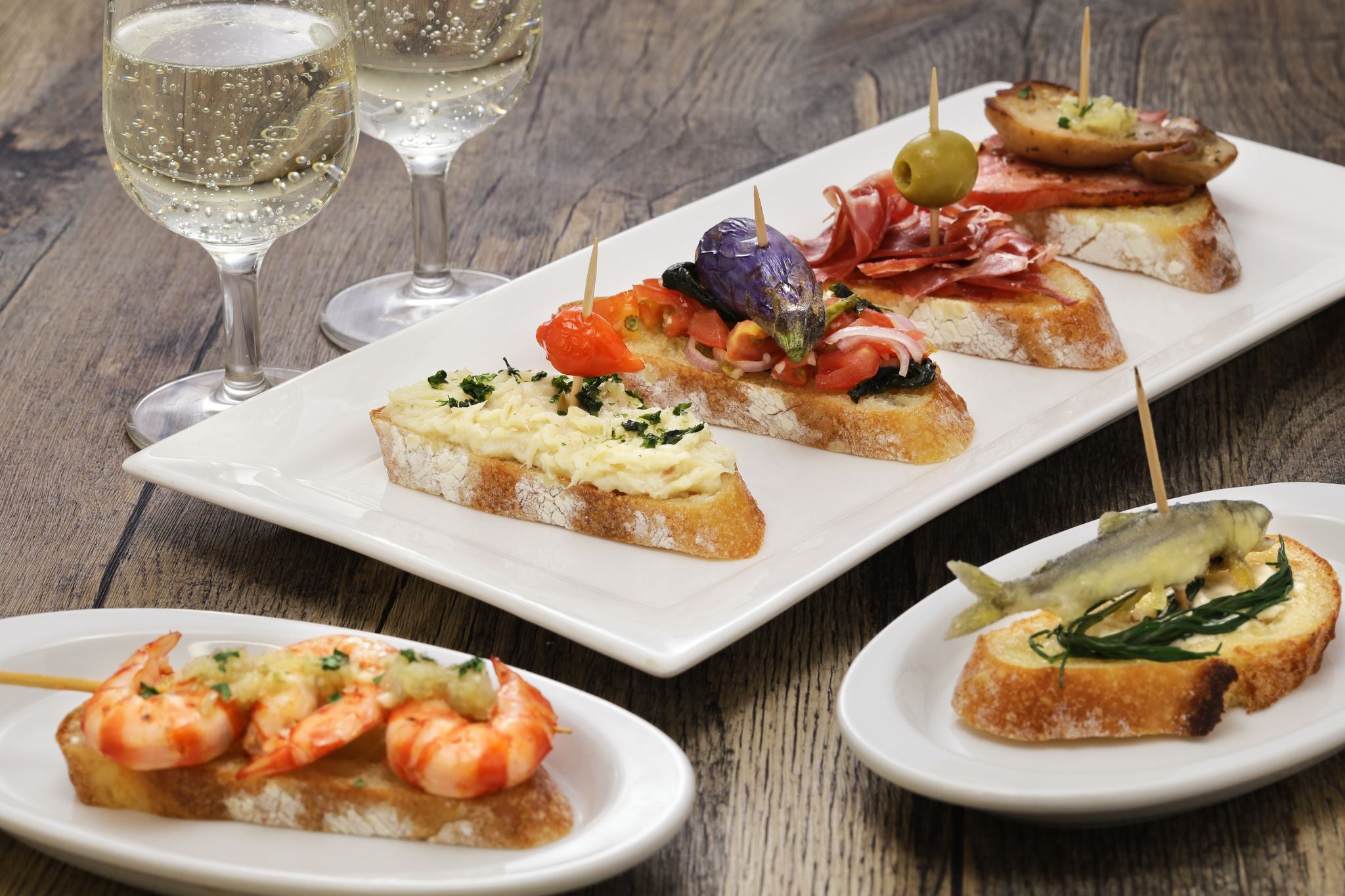
Immerse yourself in the local flavors with a Rialto Farmers Market food tour with wine tasting and sightseeing, sampling fresh ingredients and regional wines. This is also the perfect season to step into a bacaro, enjoy cicchetti (Venetian tapas), and sip on a refreshing spritz or regional Prosecco.
With longer, milder days, outdoor dining takes center stage in Venice. Canal-side tables offer stunning views, perfect for enjoying freshly caught seafood prepared with simplicity and care.
What To Eat and Drink in Venice in Autumn
Fall is a food lover’s dream in Venice. The city’s markets brim with earthy truffles, mushrooms, and wines from nearby Veneto vineyards.
Enhance your culinary journey with a cooking class on a farm in Veneto outside Venice. This gives you an opportunity to learn how to prepare seasonal dishes using fresh, local ingredients.

In the city’s restaurants, comforting plates of risotto al nero di seppia (squid ink risotto) and bigoli in salsa (thick pasta with anchovies) showcase Venice’s deep-rooted food traditions. Harvest festivals add to the experience, where you can sip on Valpolicella or Soave while indulging in Venetian dishes.
What To Eat and Drink in Venice in Winter
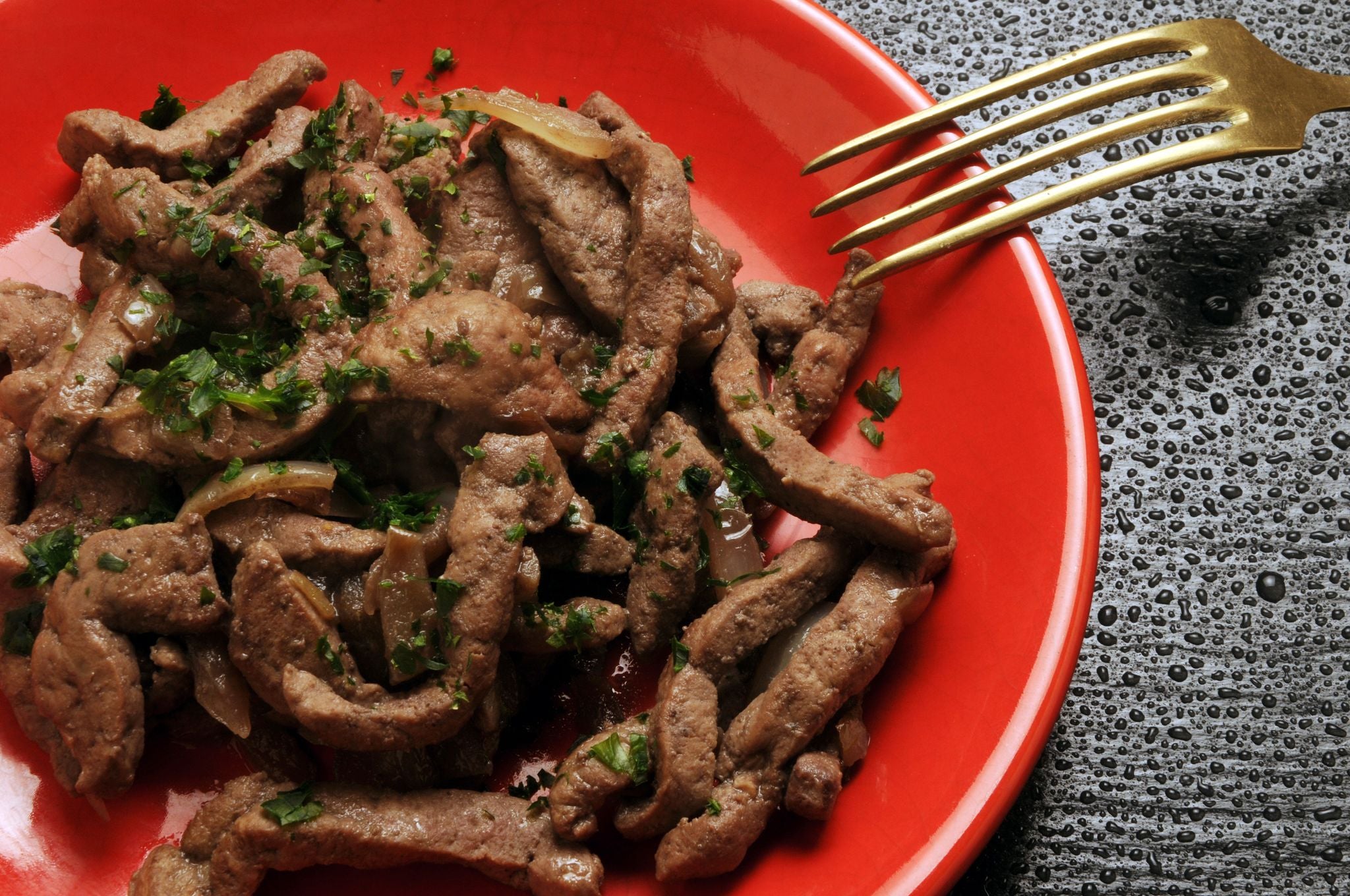
Winter in Venice is all about rich, warming dishes that bring comfort on chilly days. Traditional specialties like fegato alla Veneziana (liver with onions) highlight the city’s historic flavors, while moeche (soft-shell crabs) offer a unique seasonal delicacy from the Adriatic.
The Carnival season brings sweet indulgences such as fritole, perfect for pairing with a warm coffee or hot chocolate. For a true taste of winter, join a coffee and dessert morning tour in Venice, combining delicious treats with the city’s most iconic sights.
When Is the Best Time To Visit Venice for Foodies?

Autumn is the best time to visit Venice for food lovers. The markets are at their most abundant, filled with truffles, mushrooms, and freshly harvested grapes. Restaurants highlight rich, seasonal dishes, and the cooler weather makes it the perfect time for a local Venetian cooking class, wine tours, and leisurely meals in cozy trattorias. The season’s harvest festivals also offer a chance to experience Venetian cuisine at its most authentic.
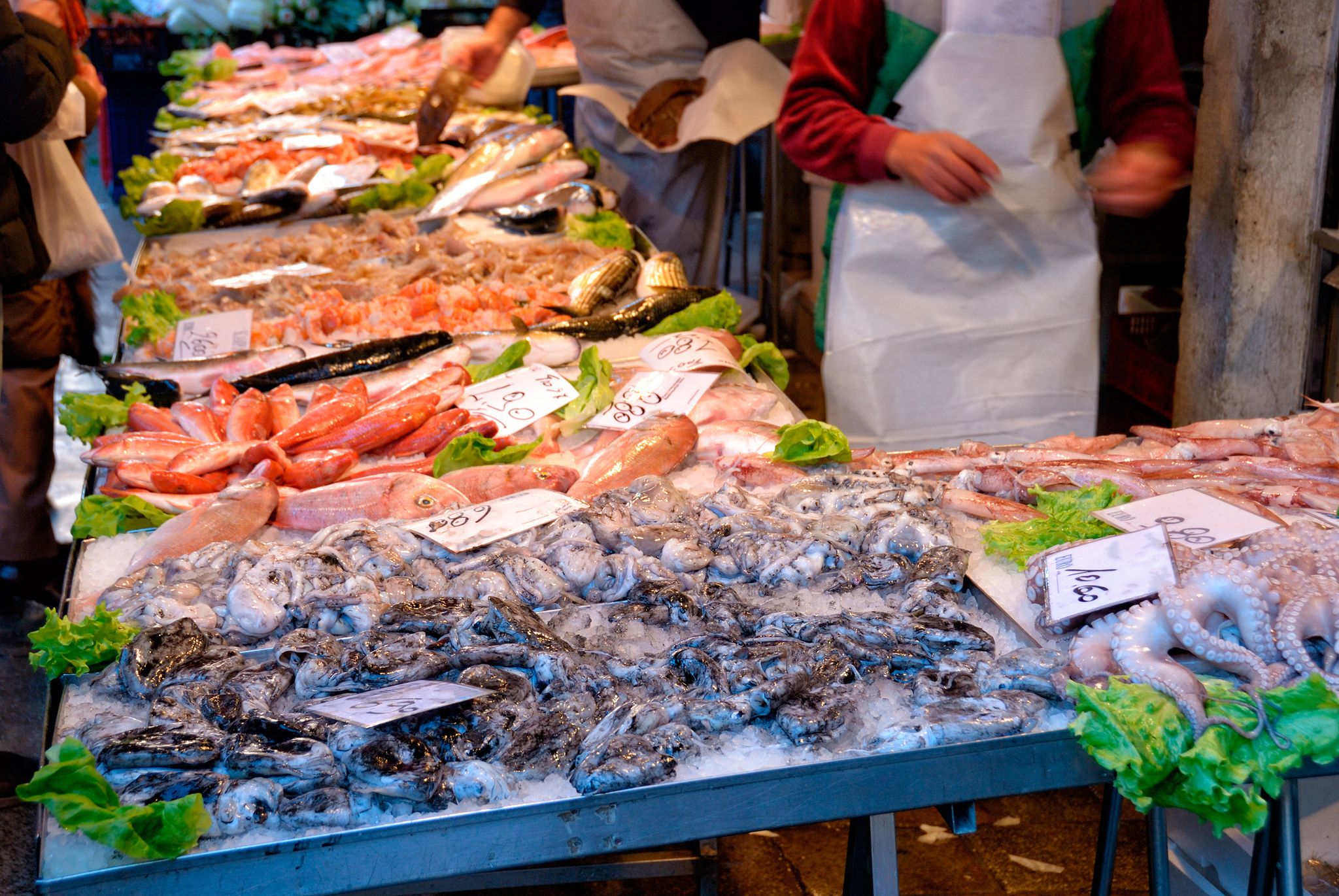
Spring and early summer bring a different kind of culinary experience. Markets overflow with artichokes, white asparagus, and lagoon-caught fish, while the warmer temperatures make alfresco dining and cicchetti with a spritz a highlight. However, crowds begin to build as summer approaches, making restaurant reservations more essential.
Winter is ideal for those who love rich, comforting food. Traditional Venetian dishes dominate menus, and the Carnival season adds a festive element with its sweet pastries and seasonal specialties. While it’s a wonderful time for cozy dining, the cold, damp weather and occasional acqua alta can limit outdoor food experiences.
Best Time To Visit Venice To Avoid Crowds
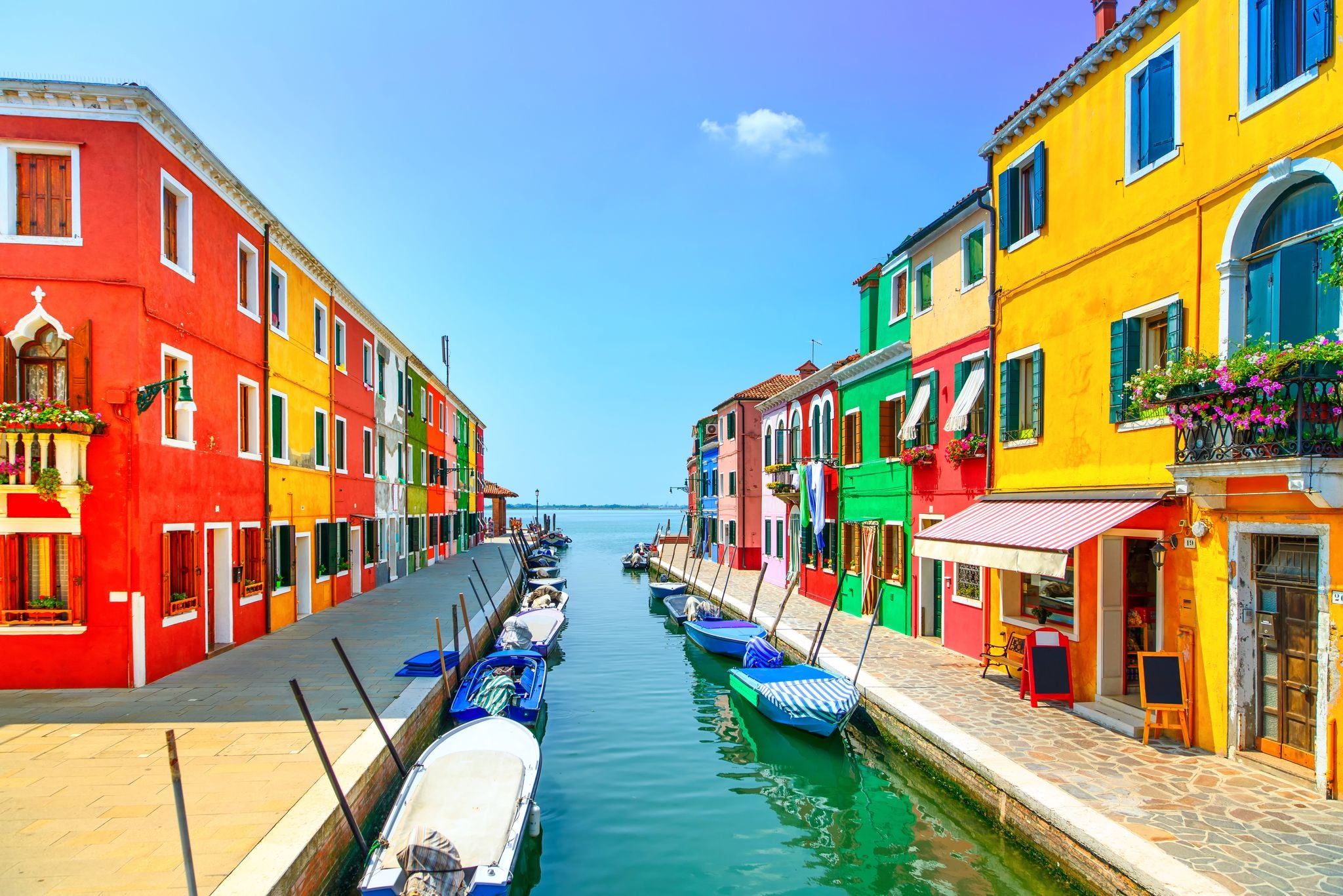
Seasonal flavors enhance any trip, but crowd levels can shape the experience just as much.
The best time to visit Venice for a tranquil experience is during the city’s off-peak periods when tourist numbers are lower. With fewer crowds, a 3-day city break in Venice becomes a more relaxed and immersive experience, allowing you to fully appreciate the city’s beauty.
Best Time of Day To Visit Venice’s Top Attractions
No matter the season, Venice’s most famous sites tend to be busiest between 10:00 and 16:00, as day-trippers and tour groups arrive. Peak seasons see the heaviest crowds, while winter offers more breathing room—except during major events like Carnival.
To experience these attractions without the rush, visit in the early morning or late afternoon, when the city is quieter, more atmospheric, and perfect for photography.
Morning: The Best Time to See Venice Before the Crowds (07:00 – 10:00)
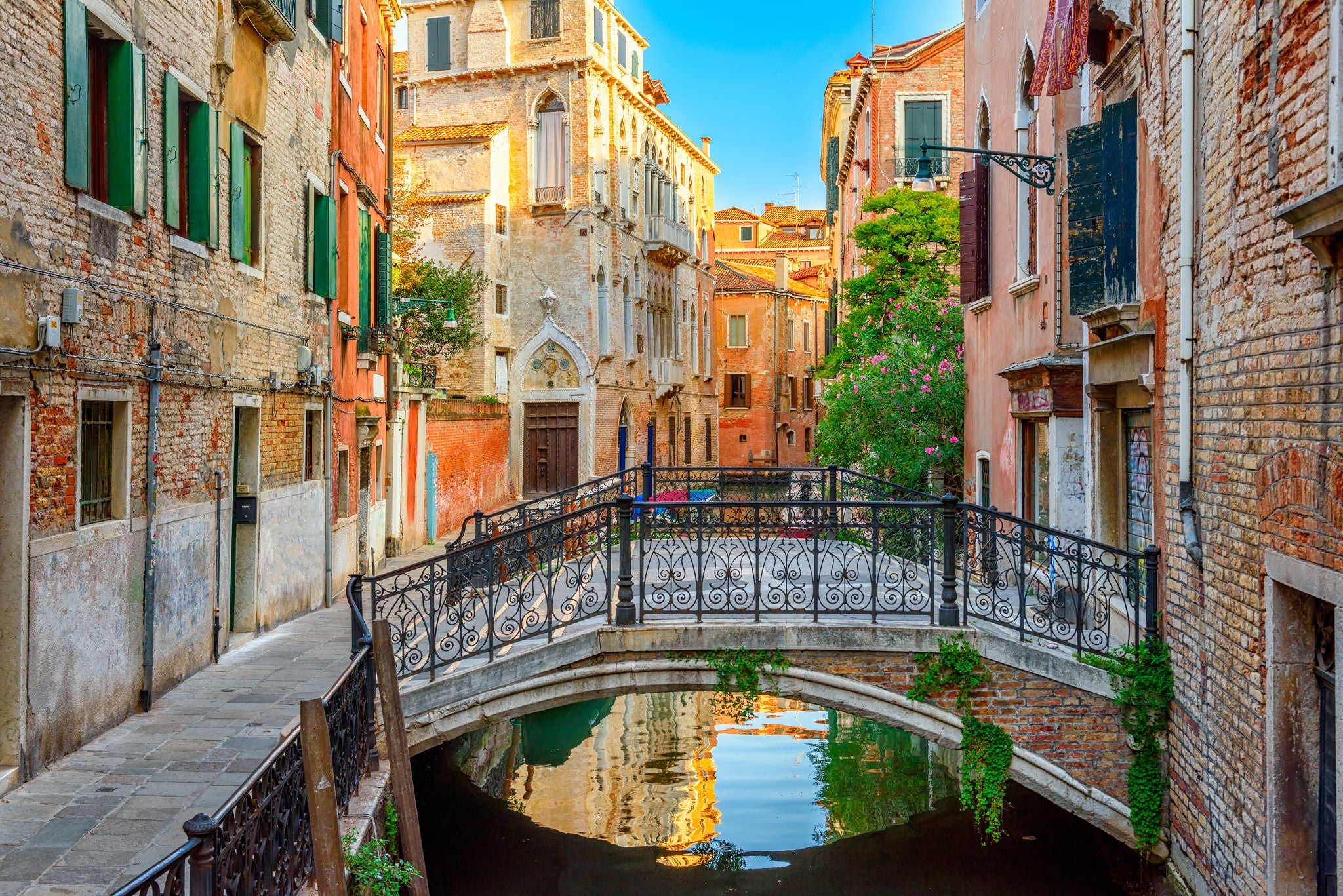
Starting early lets you experience Venice’s charm before the rush. The soft morning light also makes for incredible photos, making this the perfect time for a private walking and photography tour in Venice.
- 07:00 – 08:30 | Rialto Bridge & St. Mark’s Square – Capture stunning sunrise photos before the crowds arrive.
07:30 – 09:00 | St. Mark’s Basilica – Enter early to admire its magnificent mosaics without long waits.
08:30 – 10:00 | Doge’s Palace & Bridge of Sighs – Explore Venice’s historic landmarks before tour groups arrive.
09:00 – 10:00 | Murano & Burano Islands – Visit early to enjoy peaceful streets and glassblowing workshops. For a scenic trip to more Venetian islands, take a boat trip to Murano, Torcello, and Burano islands.
09:00 – 10:00 | Rialto Market – Watch locals shop for fresh seafood and produce in a lively morning setting.
Midday Break (10:00 – 16:00): The Busiest Time in Venice
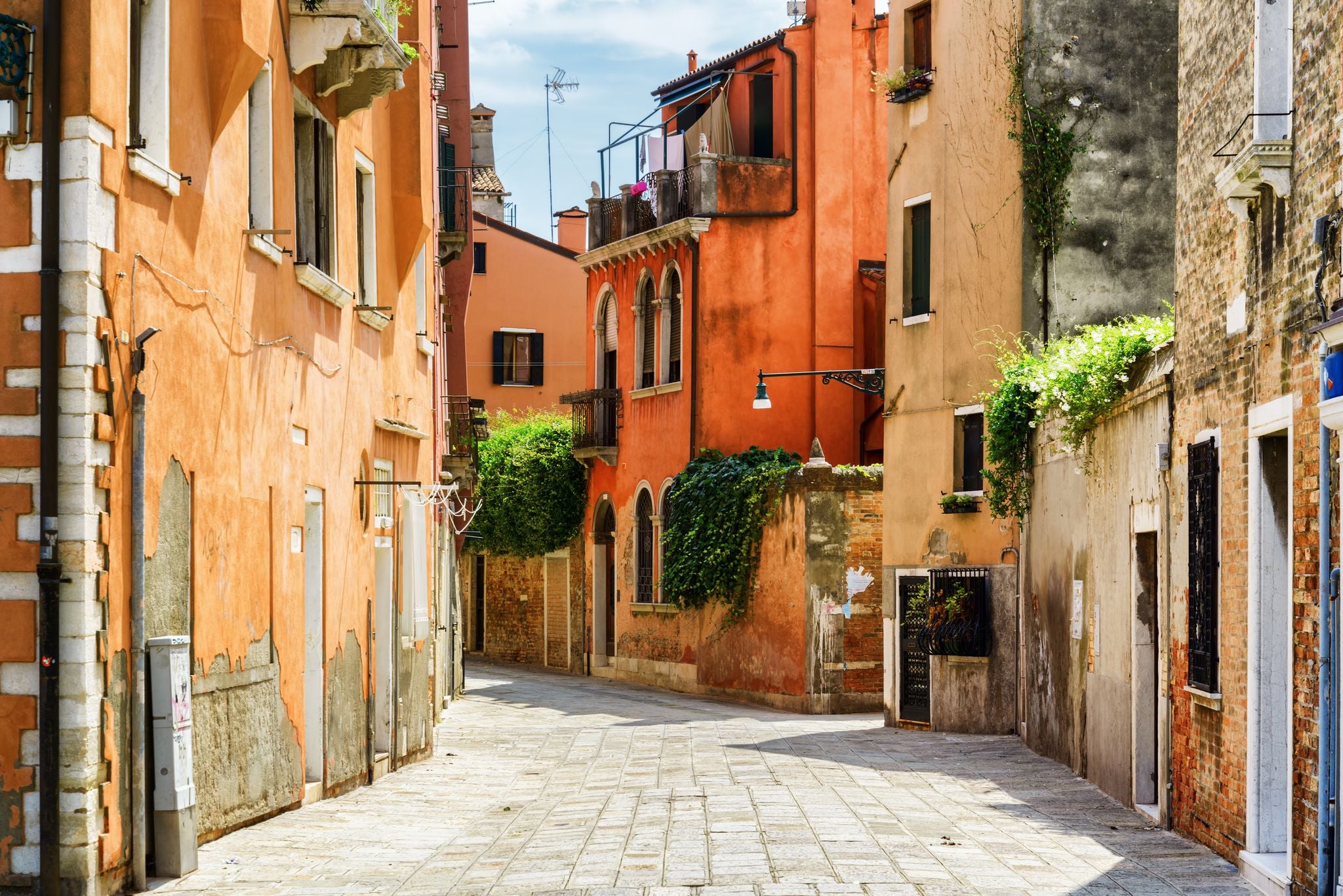
Avoid St. Mark’s Basilica, Doge’s Palace, and popular museums like the Accademia during these peak hours. Midday is when Venice’s main attractions are at their most crowded, making it a less ideal time for sightseeing. Instead, use these hours to explore more peaceful spots:
Enjoy a leisurely lunch in a quiet trattoria while others wait in long attraction lines.
Explore hidden neighborhoods like Cannaregio or Dorsoduro for a more local experience. The Venice Cannaregio scavenger hunt and self-guided tour lets you uncover the district’s gems at your own pace while avoiding the busiest spots.
Take a shaded gondola ride along smaller, less crowded canals instead of the Grand Canal.
Relax at a café in a quiet square, sipping a spritz and enjoying cicchetti.
Visit specialty shops or art galleries, which are less crowded than major museums at this time.
Evening: The Best Time to Experience Venice’s Magic (16:00 – 22:00)
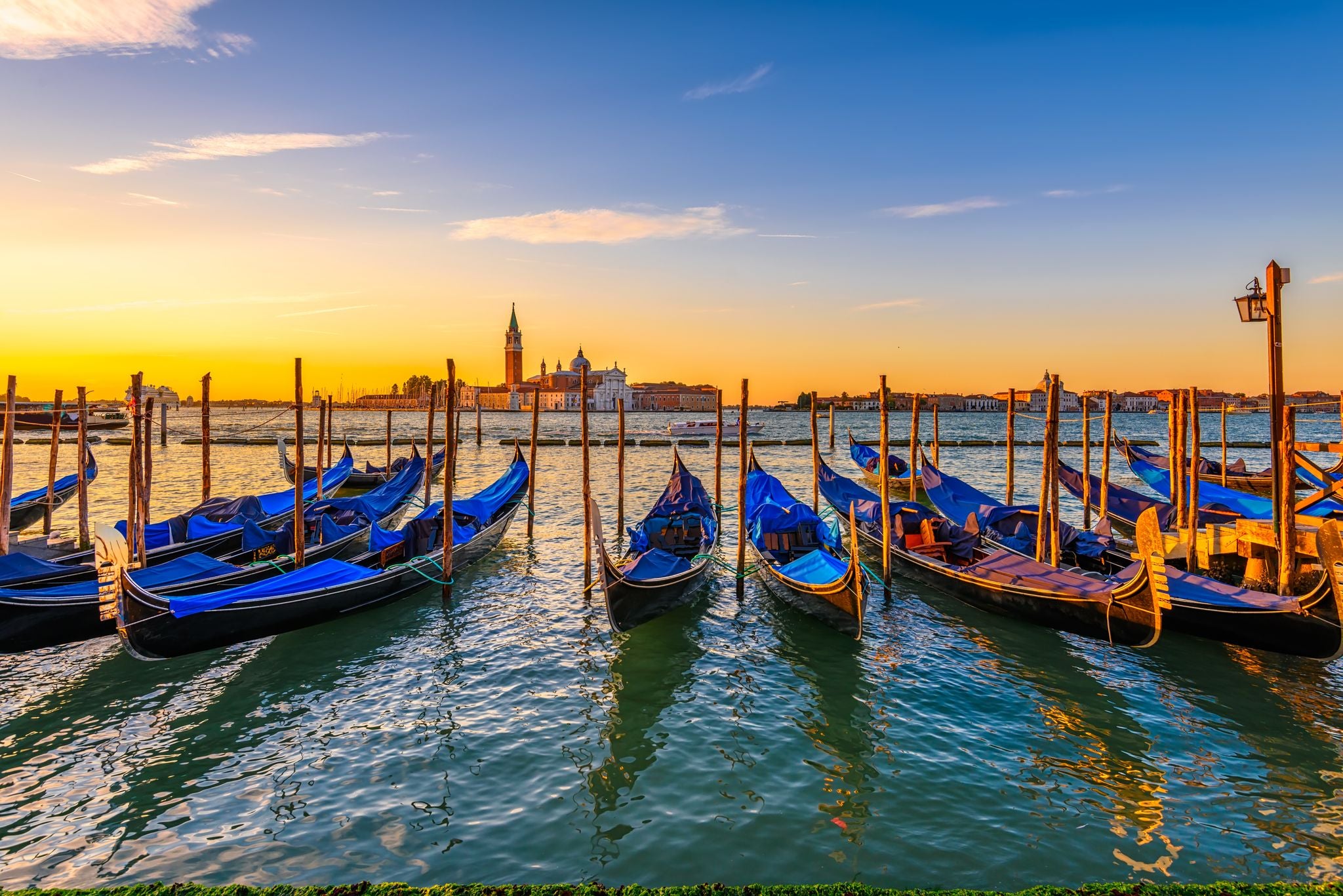
As the day winds down, Venice becomes more atmospheric and romantic. Landmarks quiet down, the canals shimmer under golden light, and piazzas glow with evening charm.
16:00 – 18:00 | Doge’s Palace & Bridge of Sighs – If you missed the morning entry, this is the next best time.
17:00 – 18:00 | St. Mark’s Basilica – Visit just before closing to experience it peacefully.
18:00 – 20:00 | St. Mark’s Square – Enjoy a classic aperitivo while soaking in the elegant evening ambiance. Or, delve deeper into Venetian flavors with a guided aperitivo Venice food tour for a curated tasting experience.
19:00 – 21:00 | Grand Canal Vaporetto Ride – Take a classic gondola ride along Venice's Grand Canal, sailing past illuminated palaces and historic facades.
After 21:00 | Rialto Bridge & Evening Walks – A peaceful time to stroll and enjoy the city without the daytime crowds.
Plan Your Day for a Better Experience
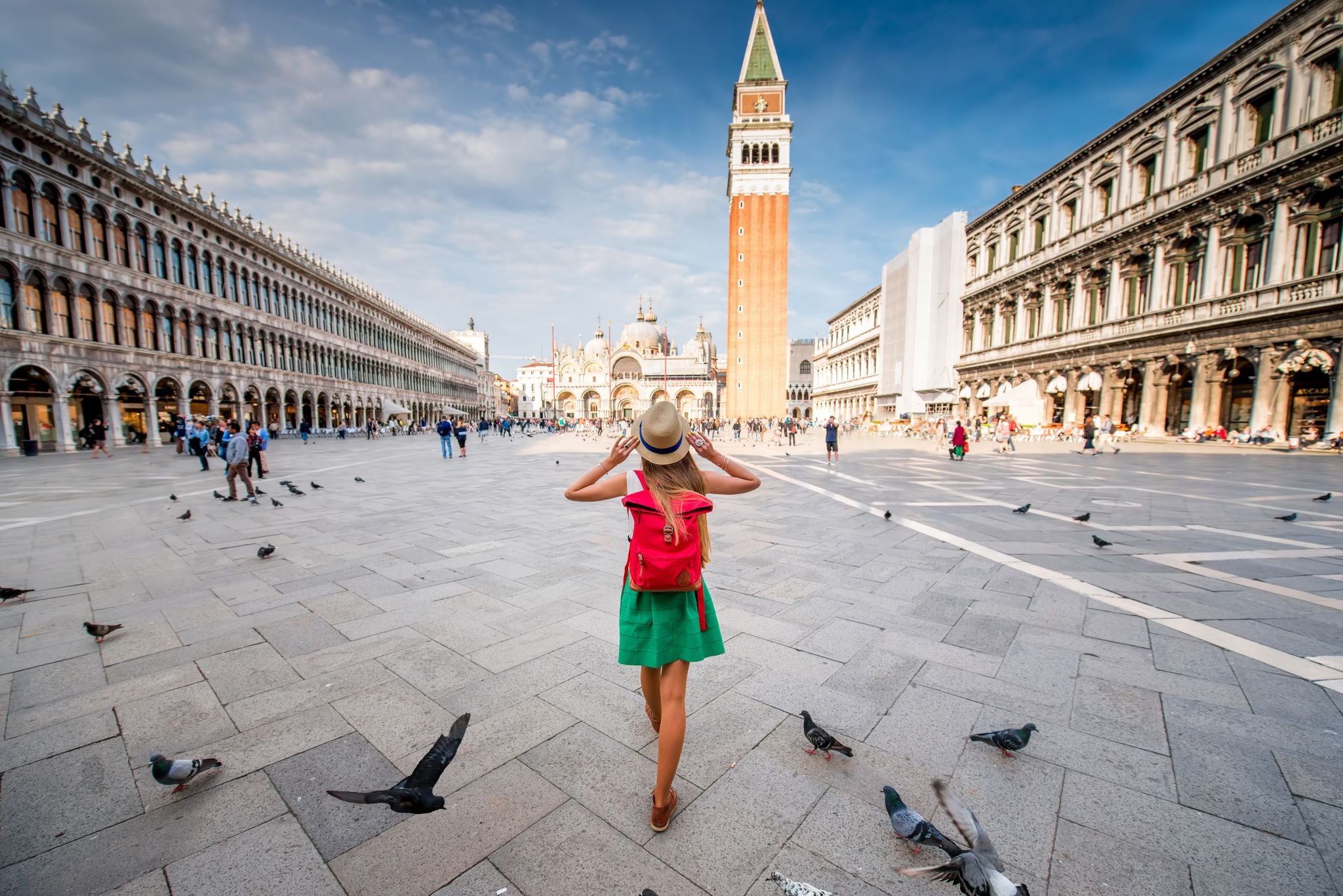
Smart timing is the key to enjoying Venice without the stress of large crowds. Starting early with a walking tour of Venice's highlights in one day ensures you see the top sights before they get too busy.
Later, a sunset vaporetto ride along the Grand Canal or a quiet evening stroll through hidden alleys lets you experience Venice’s magic in a relaxed, intimate way. For more tips on making the most of your visit, let this travel guide to Venice help you plan your trip.
Best Time To Visit Venice for Budget Travel
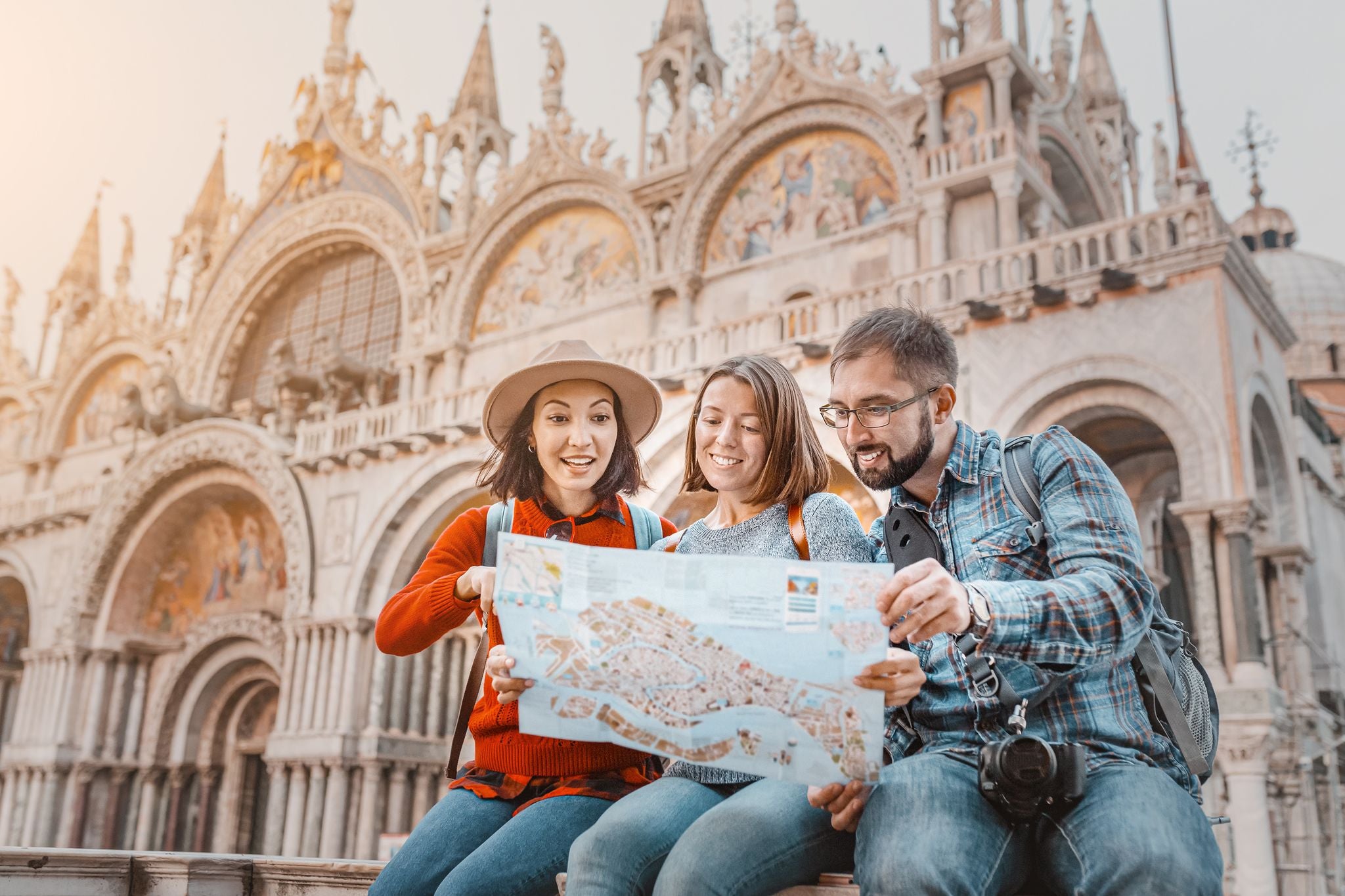
Traveling during quieter months often comes with another perk—lower prices. That said, the best time to visit Venice for budget-conscious travelers is during the off-peak season, particularly in November and January. These months offer lower prices on accommodations and flights, along with fewer crowds, making it easier to explore the city at a relaxed pace.
While the weather may be cooler, the savings and serene atmosphere are ideal for value seekers. Restaurants, attractions, and local experiences are easier to book, and many sites introduce off-season discounts. Even major landmarks like St. Mark’s Basilica and Doge’s Palace are less crowded, allowing for a more relaxed visit without premium pricing on guided tours.
For an even more budget-friendly adventure during Italy’s off-peak season, consider a 5-day self-drive road trip from Venice to Milan and Florence. Experience three of Italy’s most iconic cities in one journey. Book in advance and seek out local experiences for a high-value experience without overspending.
When To Visit Venice To Avoid Flooding
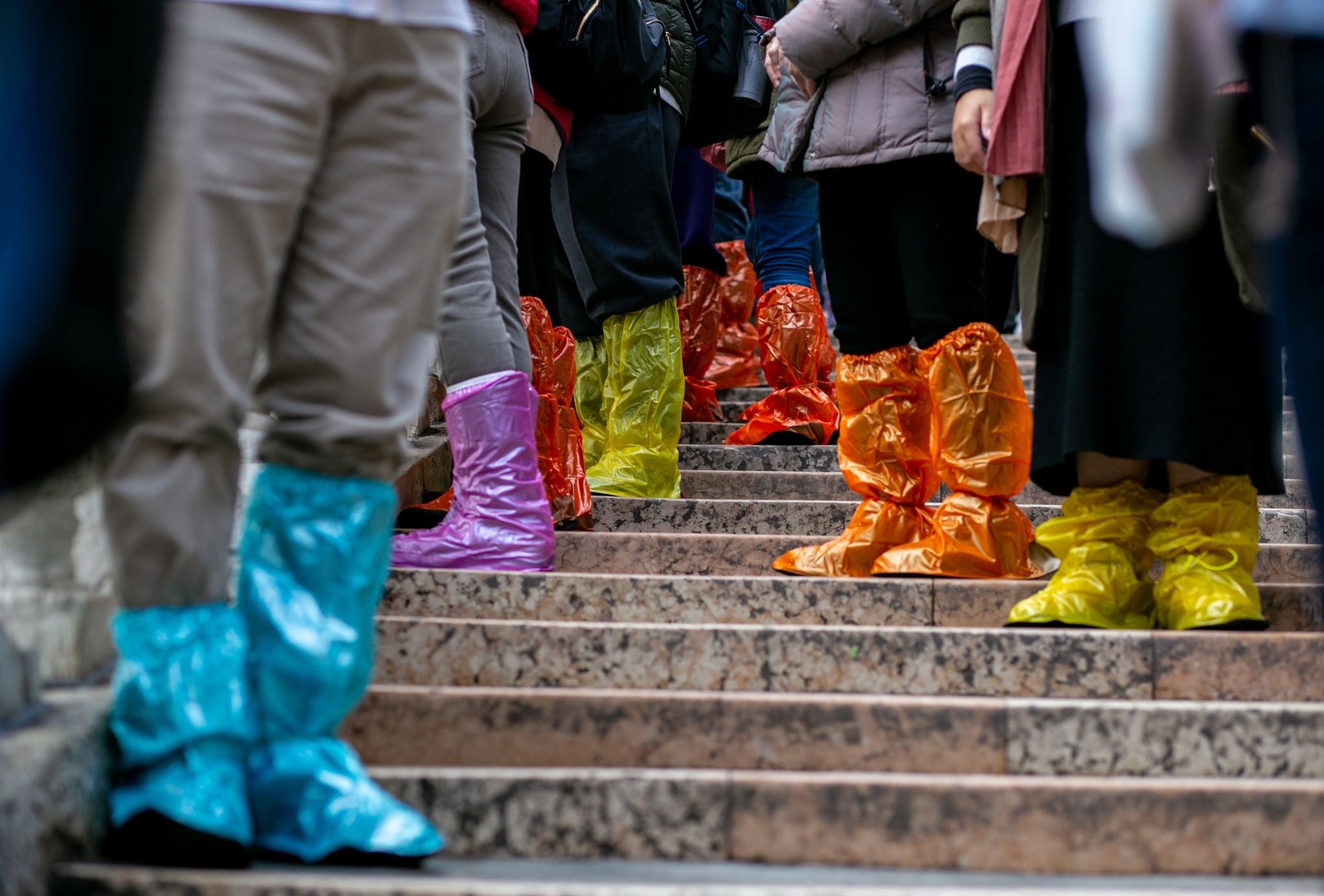
Off-season travel saves money, but it’s also important to consider seasonal flooding. Acqua alta, or high water, is more frequent in certain months and can affect travel plans.
If you want to avoid flooding entirely, the best time to visit Venice is summer. Water levels are at their lowest, and the risk of Acqua Alta is nearly zero. Just keep in mind that the city is busiest during this time, with larger crowds and higher prices.
Visiting during fall or winter? Check the tide forecast in Venice to plan ahead. If flooding occurs, there are raised wooden walkways in key areas so people can still get around. Packing waterproof shoes or boots, a light raincoat, and an umbrella can make a big difference in staying comfortable. If flooding is expected, consider staying in higher areas like Dorsoduro or Cannaregio.
More About Timing Your Trip to Venice and Other Travel FAQs
How many days is enough in Venice?
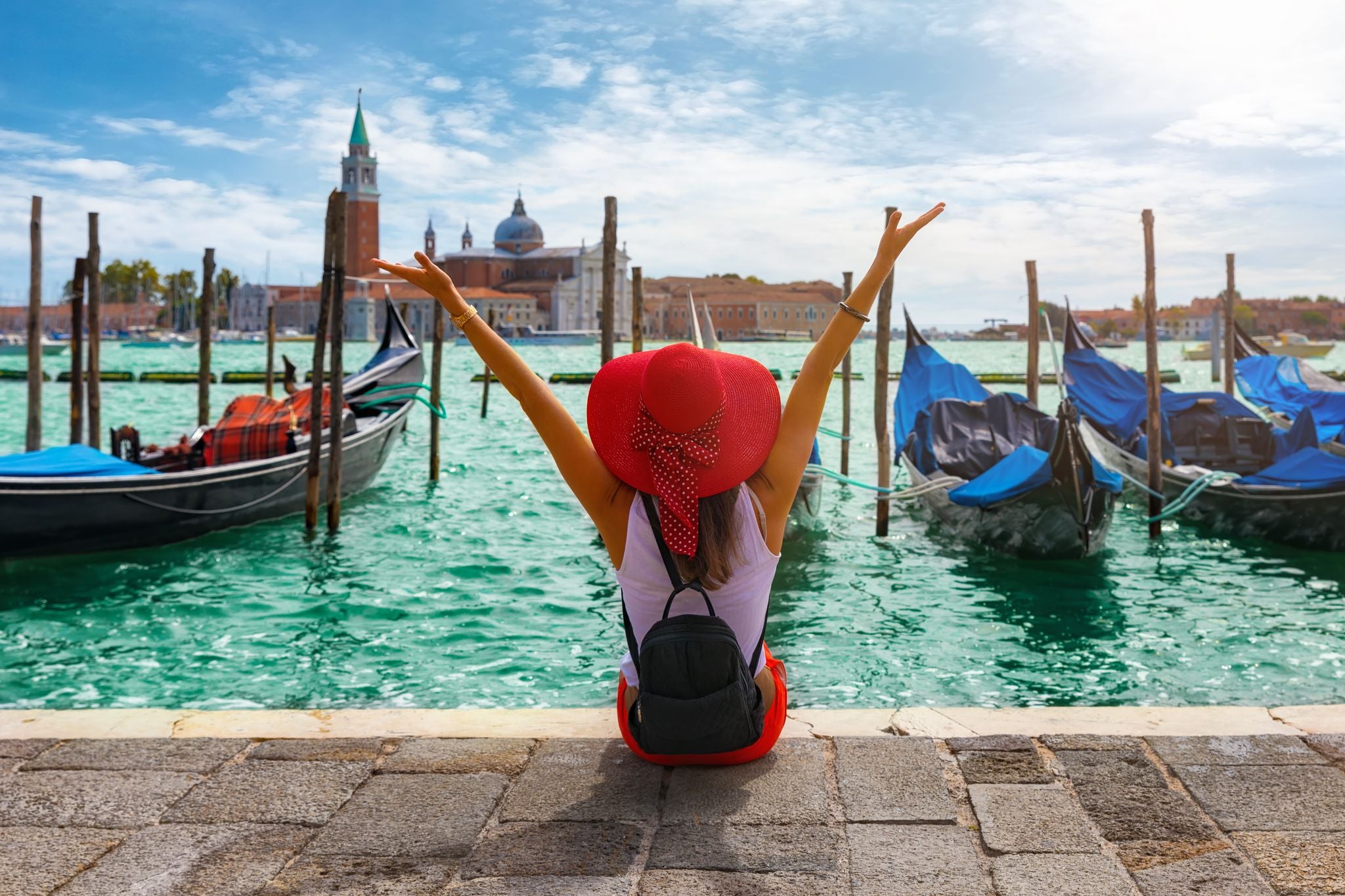
A 3-day weekend getaway in Venice is perfect for experiencing the city's iconic highlights such as the Rialto Bridge and Teatro La Fenice. Stroll through charming streets, soak in the lively atmosphere, and enjoy a gondola ride or an espresso in Piazza San Marco.
For a slower pace, a 9-day Venice city break is ideal. It allows you to explore the city's must-see landmarks while also uncovering hidden gems in quieter neighborhoods. With extra time, you can even visit nearby islands like Murano and Burano or immerse yourself in local art, history, and cuisine.
Want to explore beyond the city? A 12-day Venice road trip traveling to the south takes you to stunning destinations like Florence and Verona. This route blends Venice’s timeless charm with the rich history and landscapes of Tuscany and northern Italy.
Is Venice expensive?
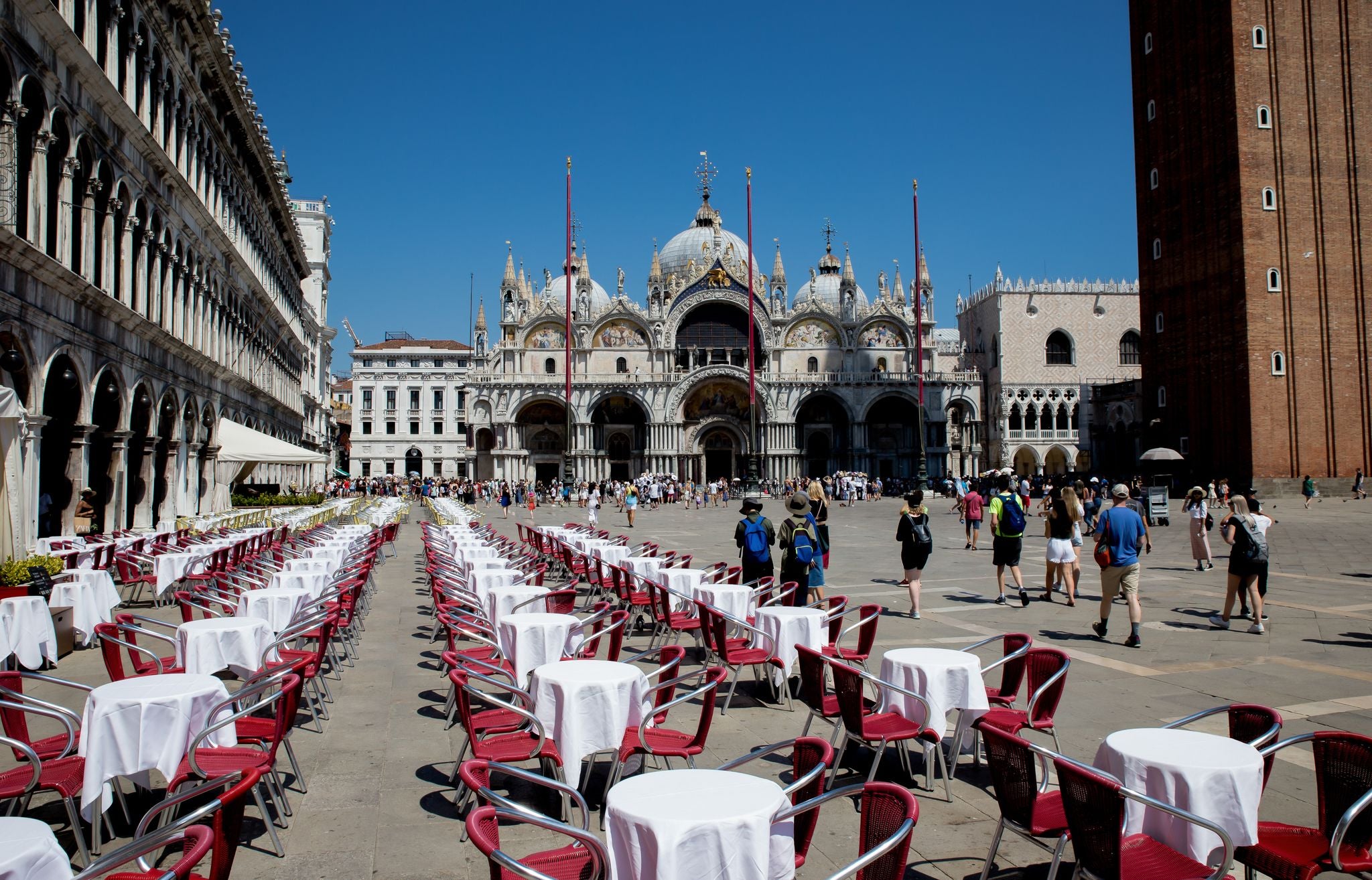
Venice can be pricier than other Italian cities due to its popularity and island location, but with smart planning, it can be surprisingly affordable. Accommodation, dining, and activities tend to cost more during peak seasons, but budget-friendly options are available.
Staying in Mestre, using Vaporetto passes, and exploring free attractions like St. Mark’s Square can help cut costs. Daily expenses range from 52 USD to 310 USD (50 EUR to 301 EUR), depending on your travel style.
When is the off-season in Venice?
The off-season in Venice is from November to February (excluding Carnival). This period is considered the best time to go to Venice for fewer crowds, lower prices, and a peaceful atmosphere. Though cooler weather and occasional flooding (Acqua Alta) may occur, it’s ideal for a quieter, budget-friendly visit.
What is the best month to go to Venice?
The best month to visit Venice for a comfortable trip is May or September. May offers warm weather and vibrant spring scenery. September provides pleasant temperatures and fewer crowds, both ideal for sightseeing.
What month is it the hottest in Venice?
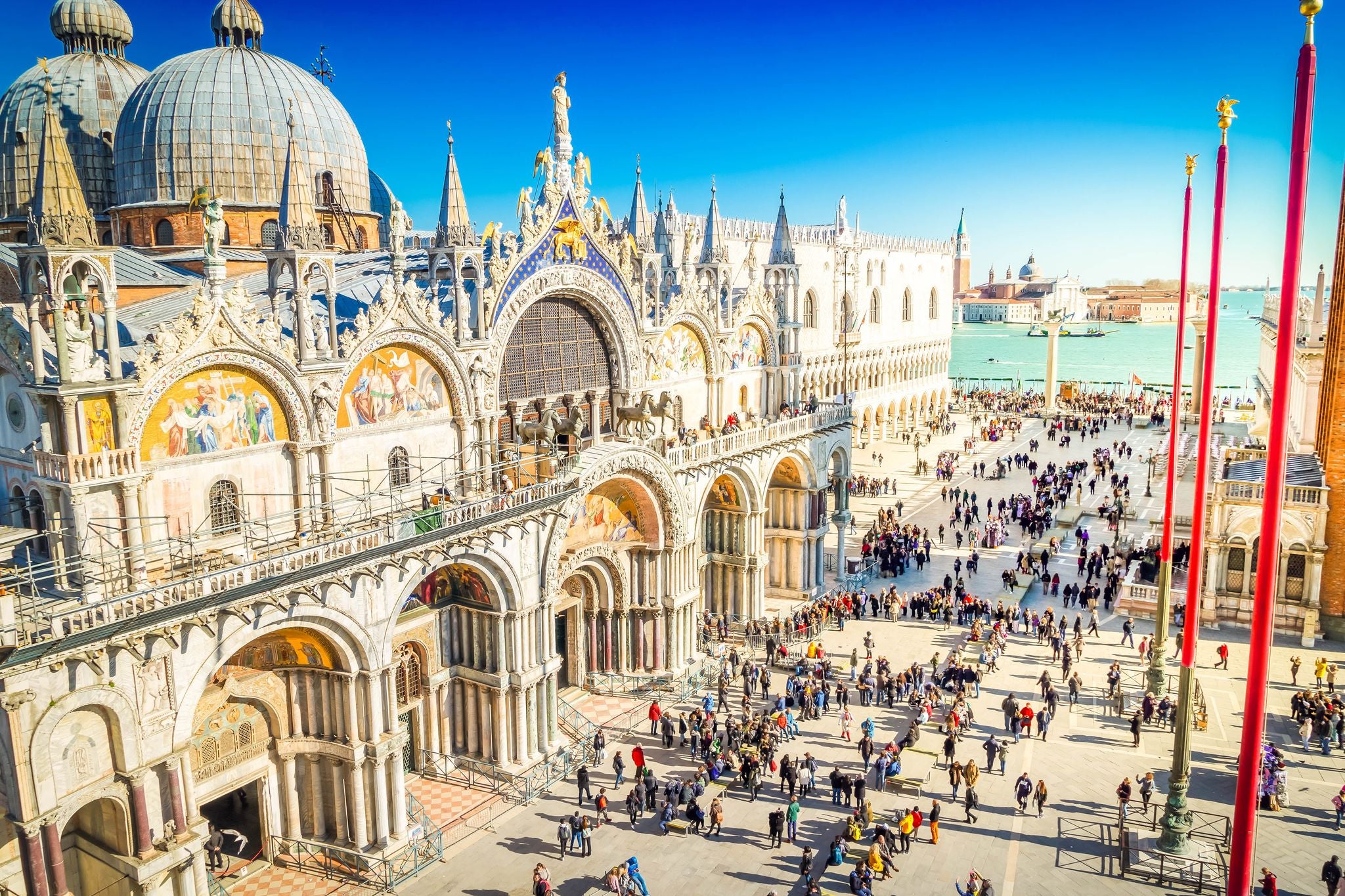
The hottest month in Venice is usually August, with temperatures often reaching 82 F (28 C) or higher. Combined with high humidity, the heat can feel intense during the day. While August is part of the peak tourist season, planning activities during early mornings or evenings and staying hydrated can make your visit more comfortable.
What is the coldest month in Venice?
The coldest month in Venice is January, with average temperatures ranging from 32 F to 46 F (0 C to 8 C). This month often sees chilly winds and occasional frost. The cold weather also contributes to fewer travelers, creating a quieter and more peaceful environment. For some, this makes January the best time to visit Venice, Italy, for a serene winter getaway.
When is the least ideal time to visit Venice?

The least ideal times to visit Venice are August and late fall to early winter (November and December). August brings high temperatures, humidity, and occasional odors due to low tides.
In November and December, Acqua Alta (high water) can flood parts of the city, requiring flexible plans. Raised walkways and real-time updates help with navigating flooded areas, and the quieter streets offer a peaceful experience.
Craft Your Perfect Venetian Adventure
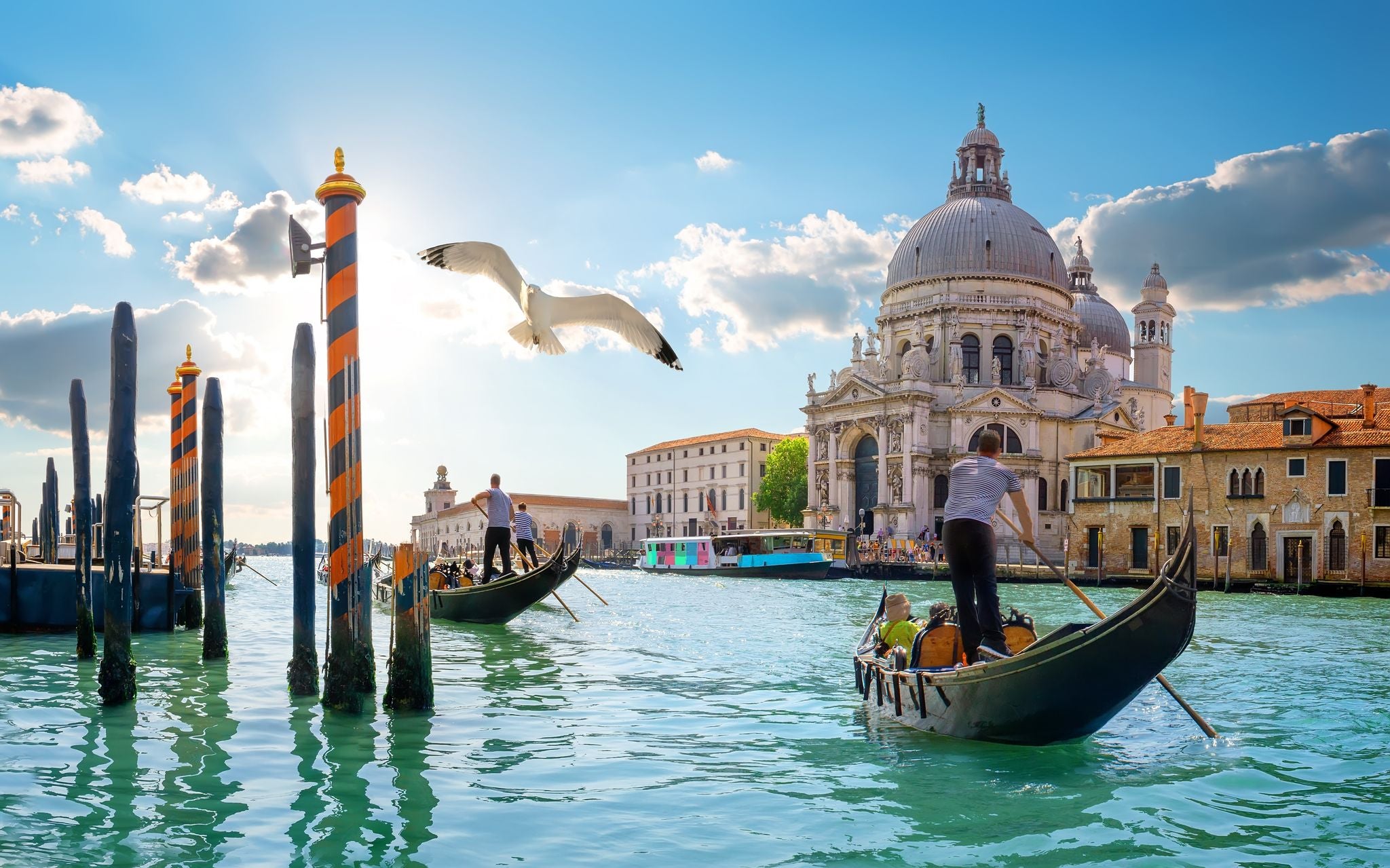
Venice offers distinct experiences throughout the year, each season highlighting a unique aspect of the city's charm. Whether you prefer the blooming beauty of spring, the lively festivals of summer, the tranquil ambiance of winter, or the golden hues of fall, the best time to visit Venice depends on your priorities.
Explore the best Venice tour packages to simplify your planning and tailor your trip to your preferences. Make the most of your trip with the Venice travel guide, packed with tips and insights for a better experience.
Dive into the top things to do in Venice to discover the city's must-see landmarks and activities. For detailed inspiration, consider top itineraries in Venice to ensure you don’t miss the highlights of this magical destination. No matter when you visit, Venice promises an unforgettable adventure.
